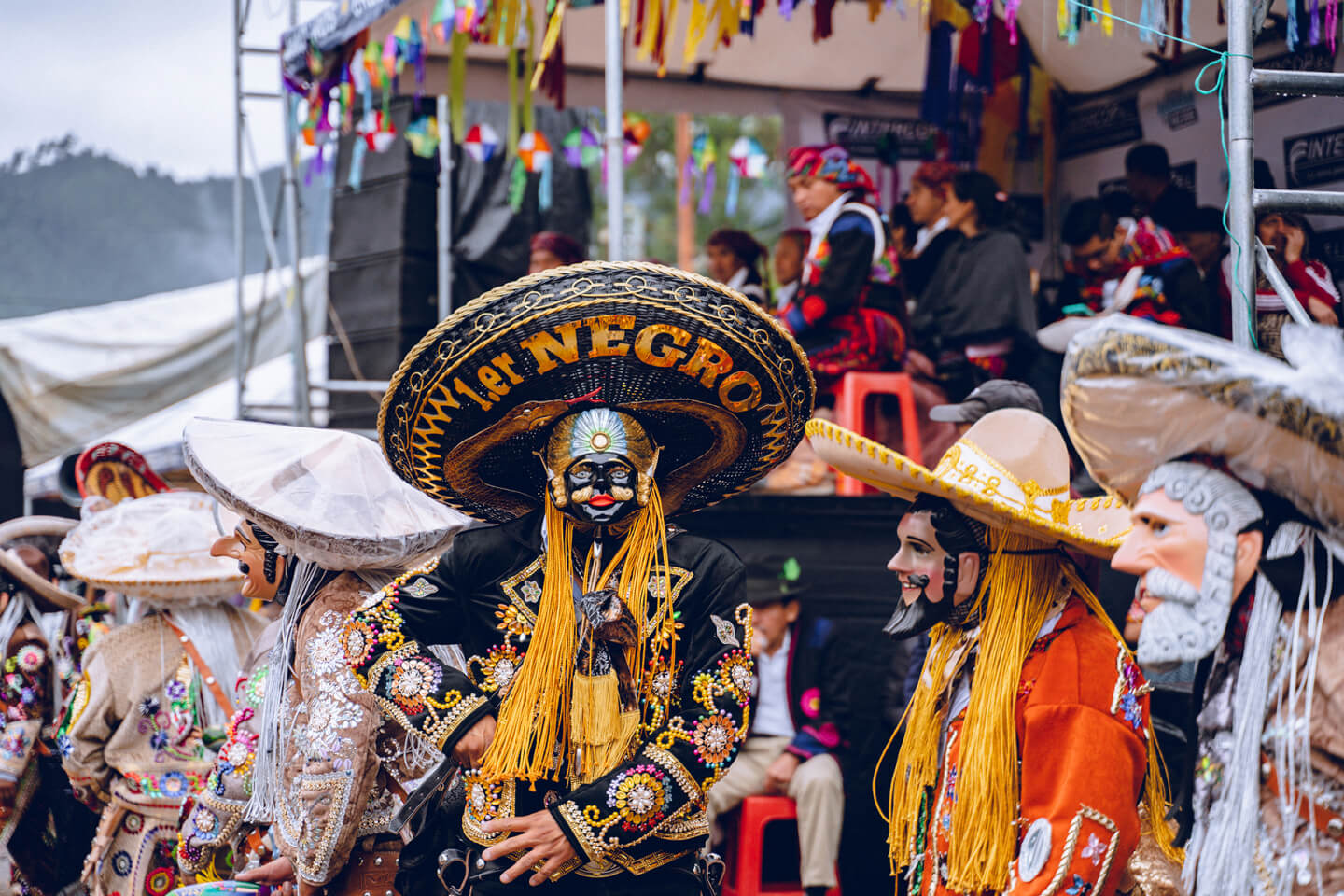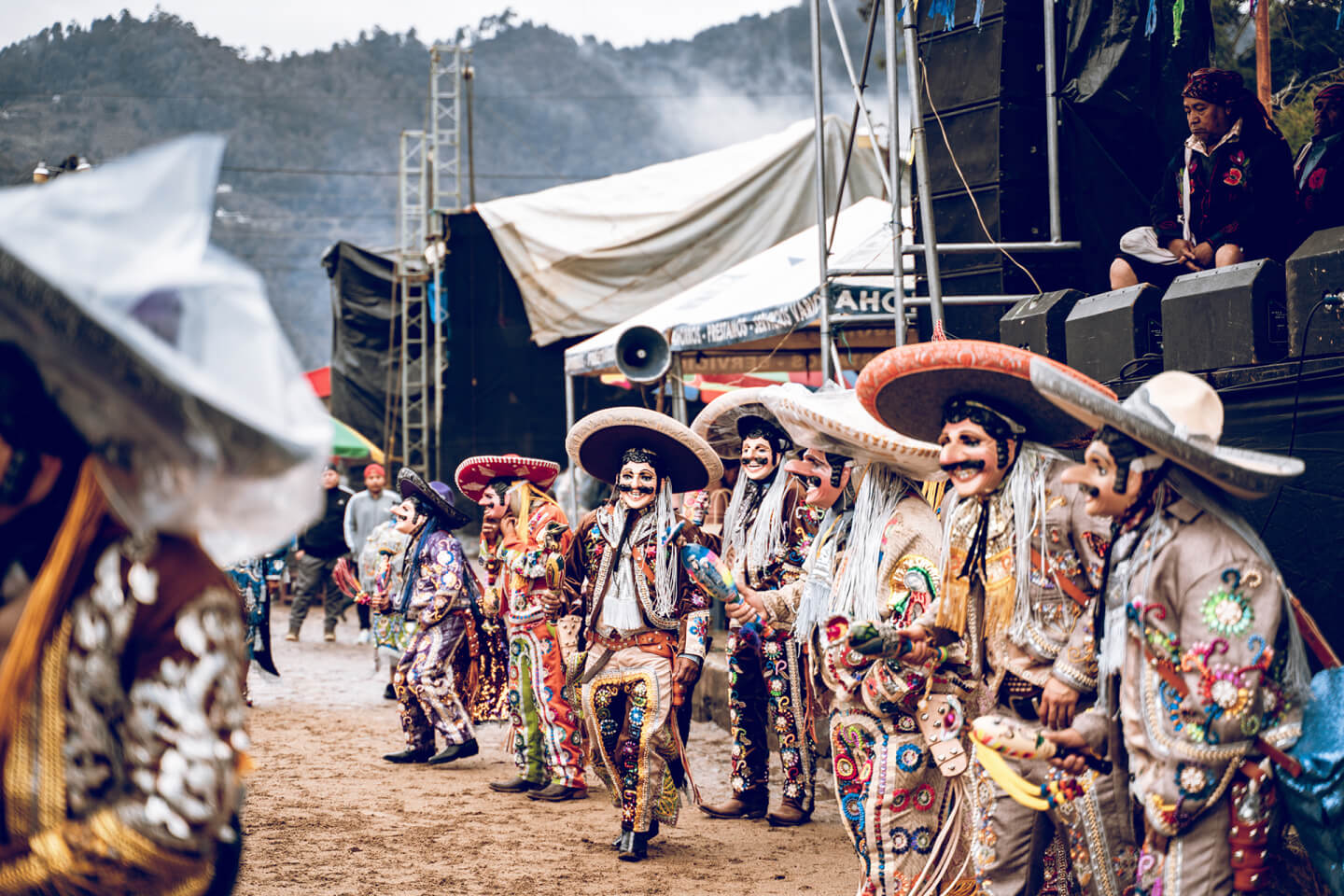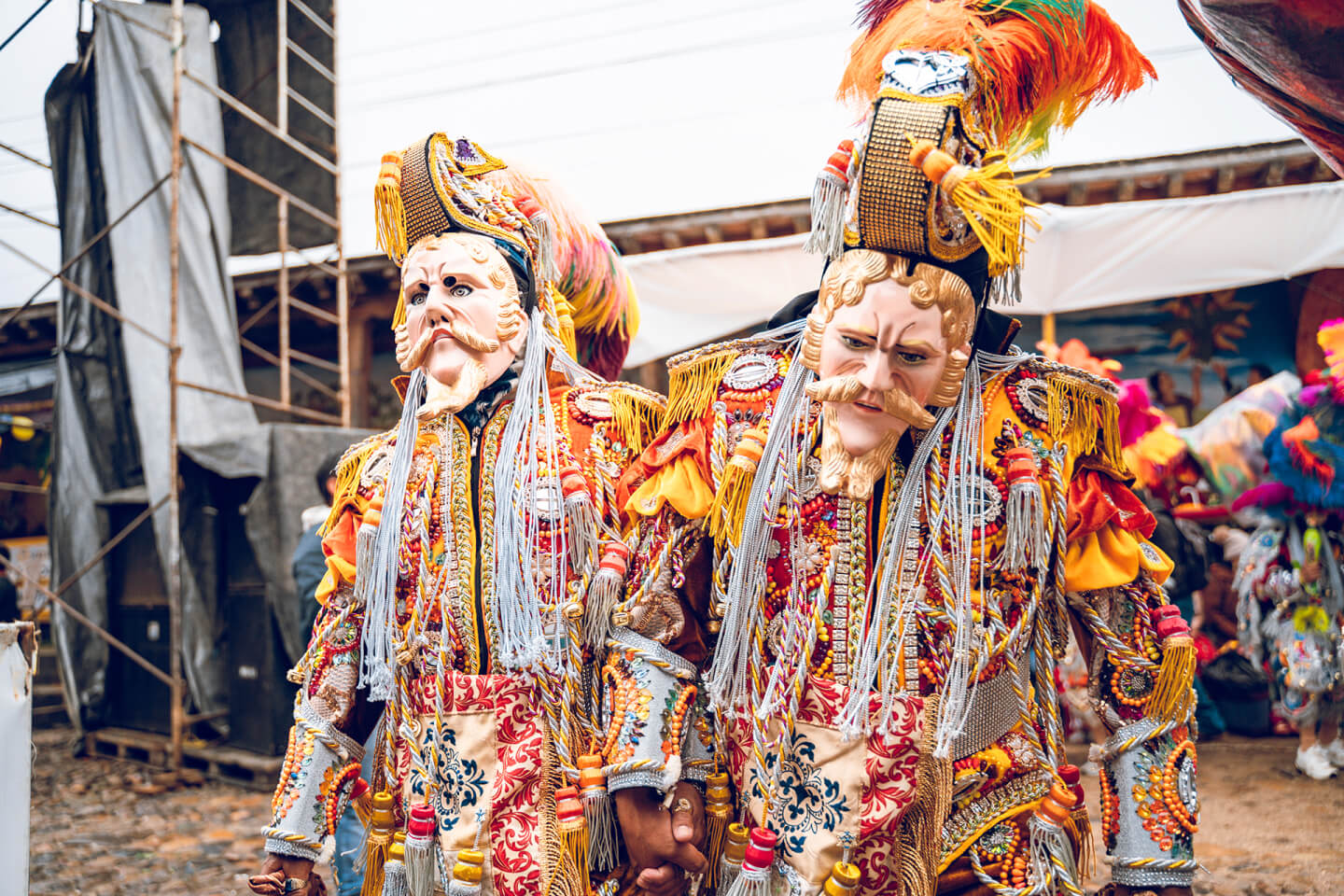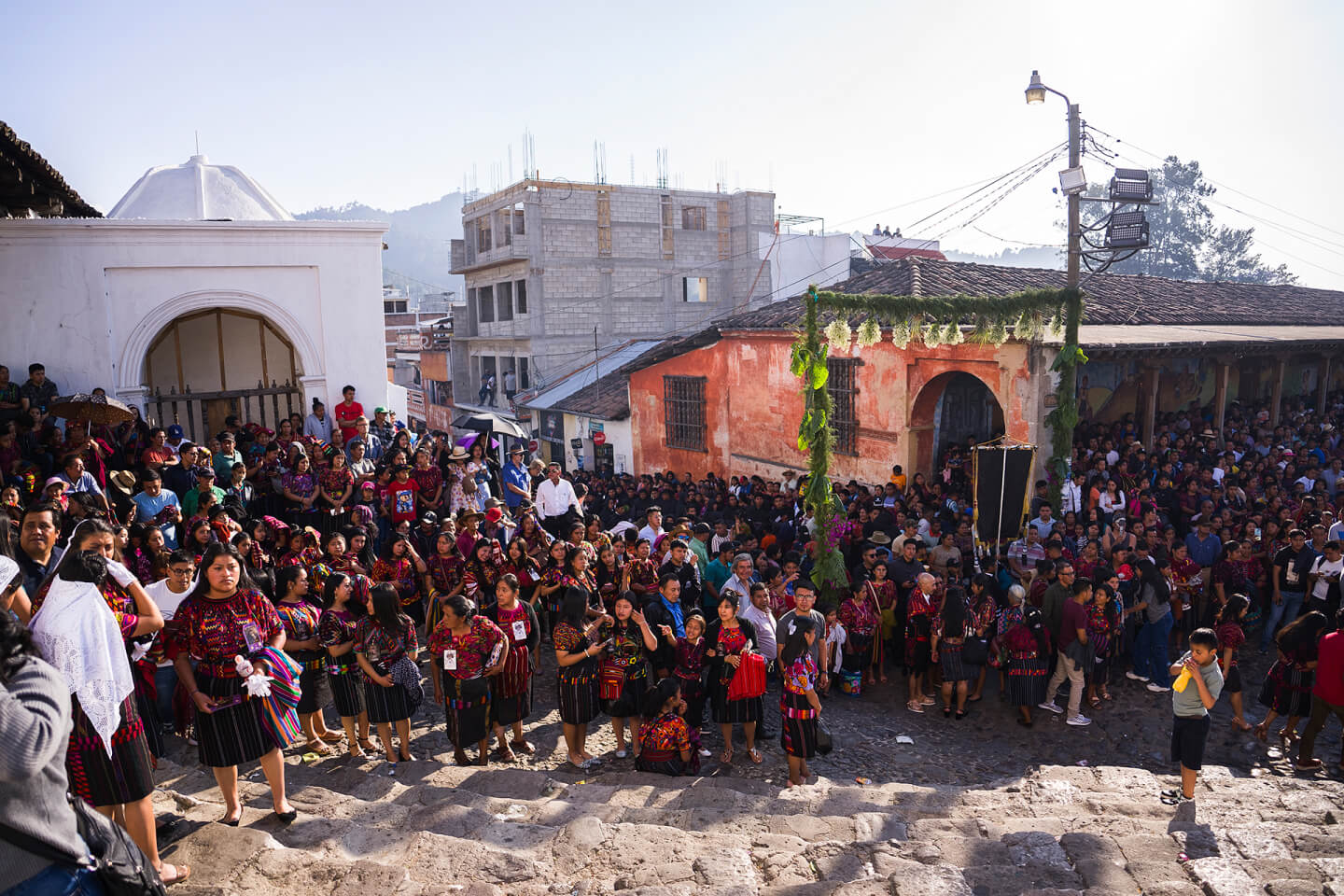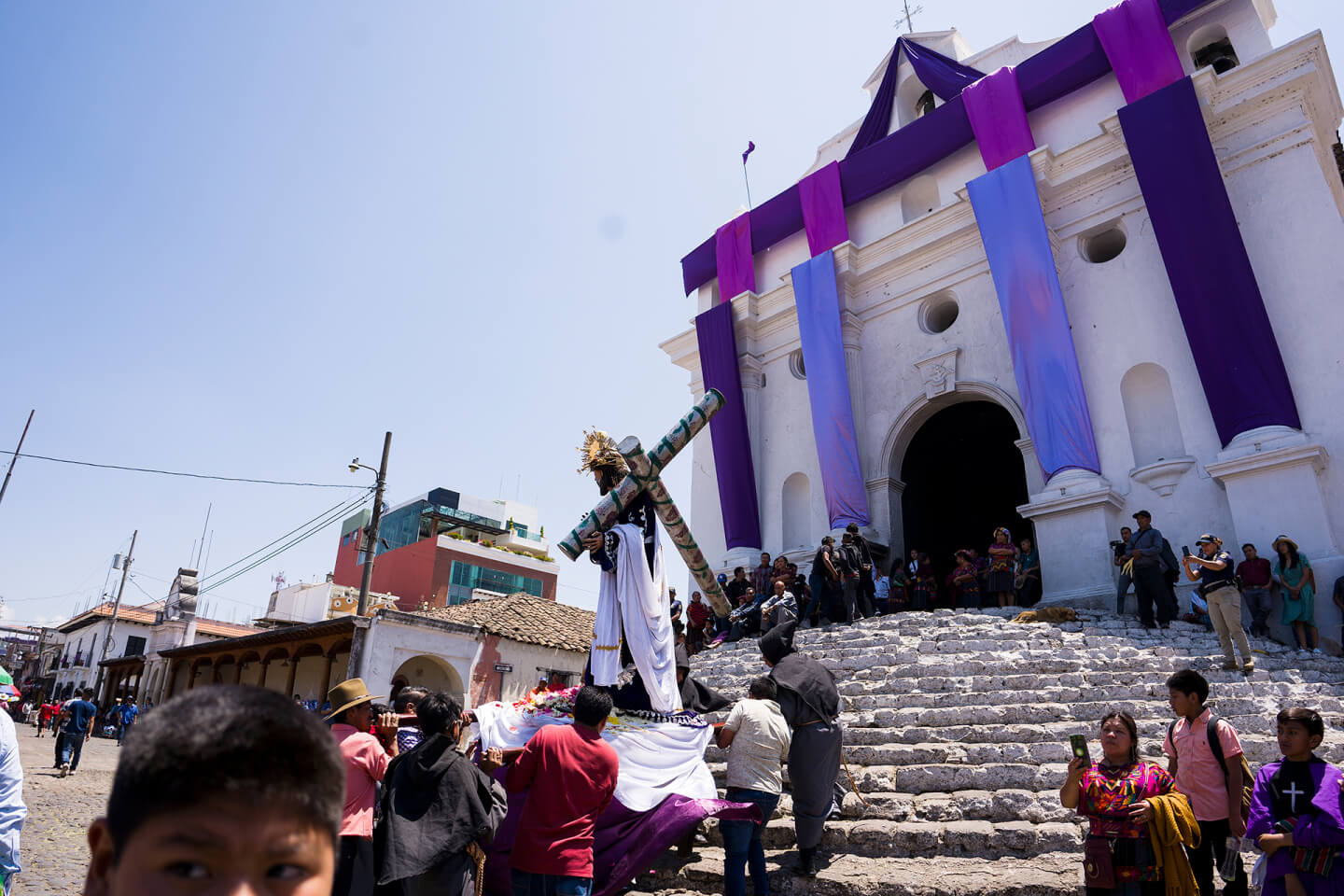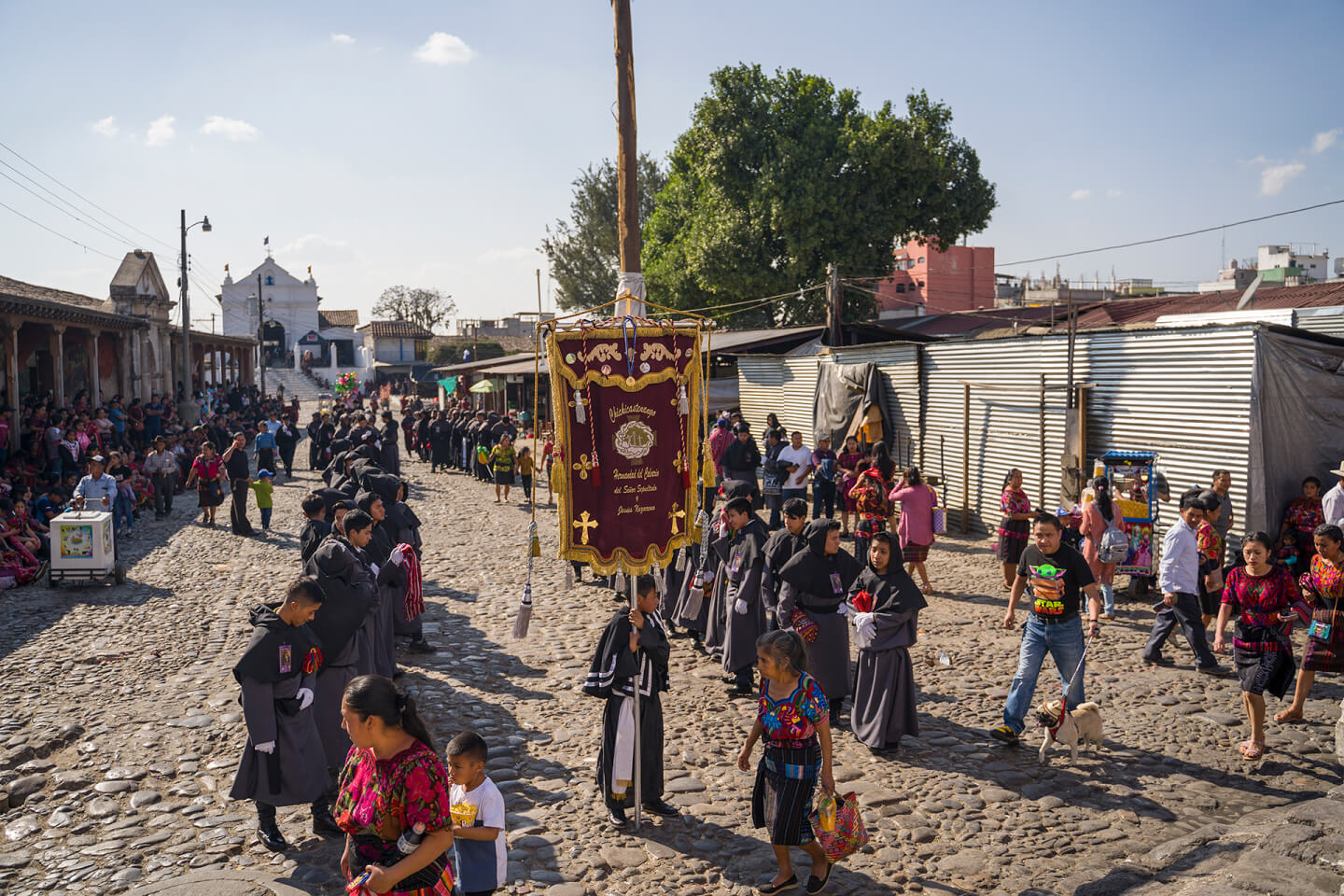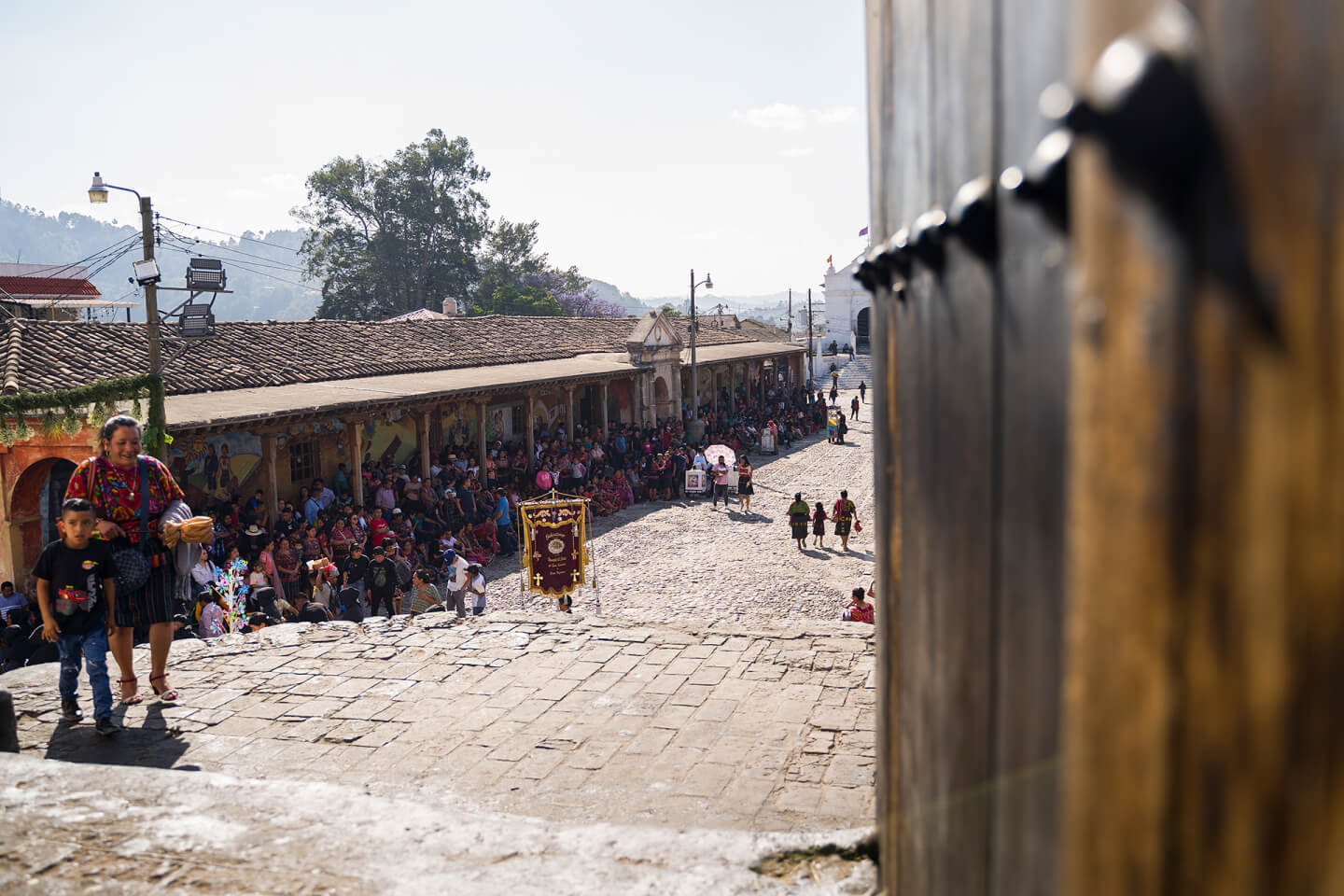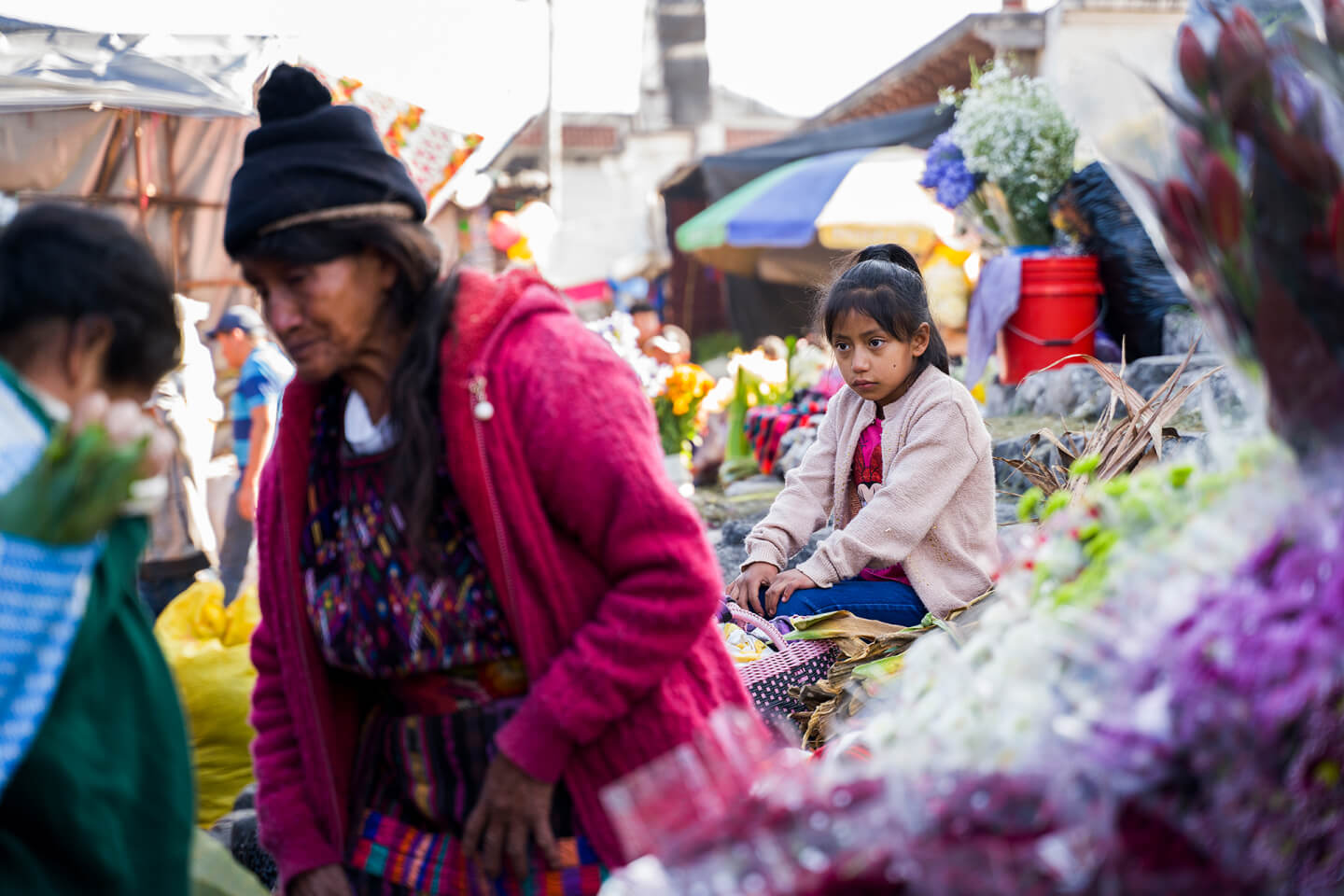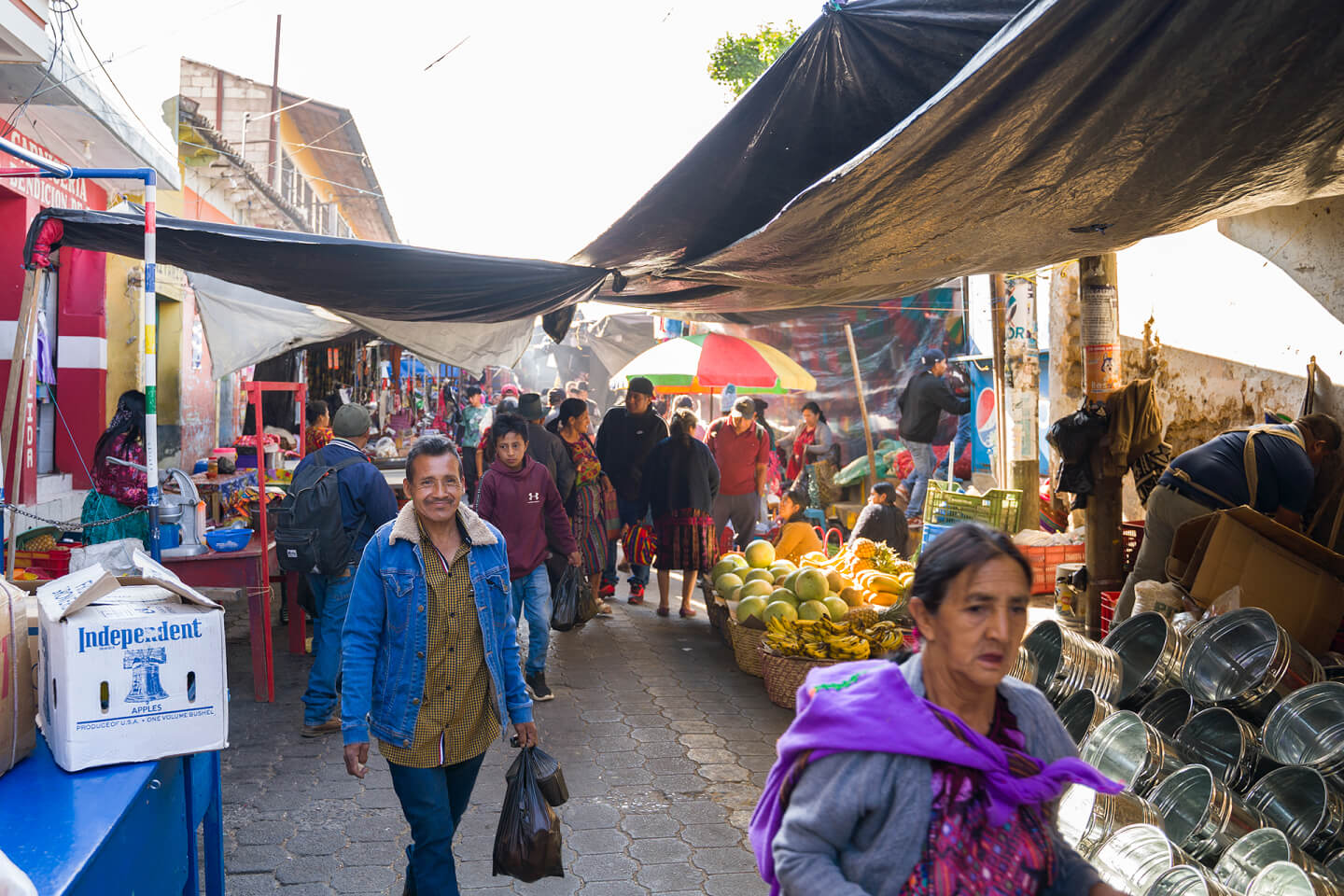












St. Thomas Church
Markets. Chichicastenango. Chapter X

One of the main places of the city of Chichicastenango and an integral part of the market is the Church of St. Thomas or Santo Tomás. Its eighteen steps, which once led to the Maya temple, are also part of the market structure: ceremonial flowers are sold here. On Sunday, a procession passes through the market. That is, locals have to reorganize the space so that there is enough space for dancing people and the procession.


The flowers that are sold on the steps of Santo Tomás are brought from high-altitude villages about 70 km from the city. Chichicastenango, Quiché Department, Kʼicheʼ tribe. 2018.
Chichicastenango, Quiché Department, Kʼicheʼ tribe. 2023. JFernando Morales Photography.


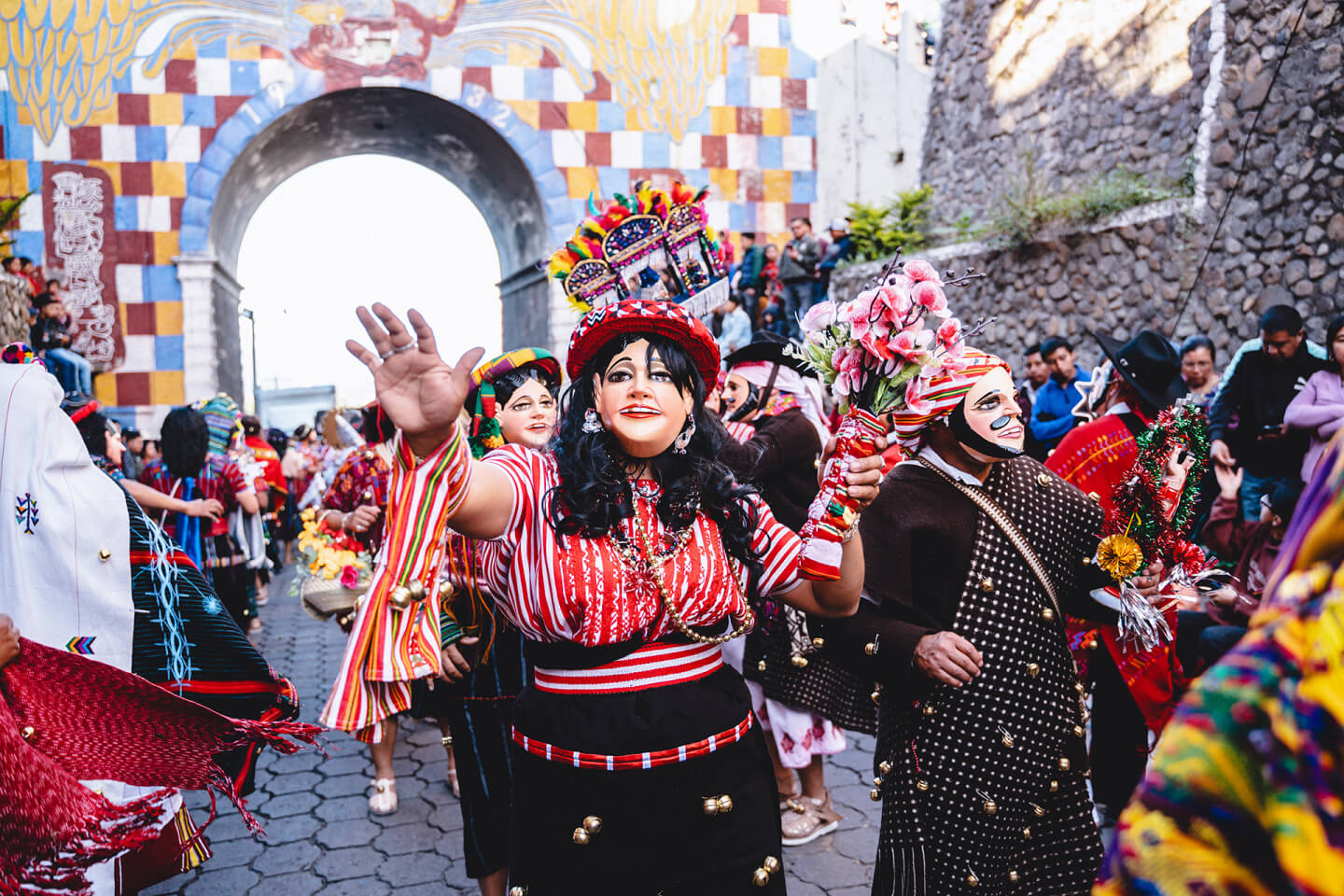
The church building is a wonderful example of colonial architecture, it was built 400 years ago, on the site of a destroyed Maya temple.
In the church, one can observe the syncretic form of the Indian belief in its most vivid expression. The church is Catholic, and sacrifices are held in it. Shamanic rituals can be included in the liturgy, and Christian saints are part of the Indian canon: this is how the Apostle Peter became the main patron of local doctors.
Thanks to Catholicism, the Indians have the concept of the devil, black magic, which is born from a contract with the unclean, and even a local holiday — the Burning of the devil (Quema del Diablo), which is celebrated on December 7. On this day, locals burn garbage to get rid of evil spirits, play music and set off fireworks.
Chichicastenango, Quiché Department, Kʼicheʼ tribe. 2018.

The main city holiday is dedicated to Saint Thomas, and is celebrated every year from December 13 to December 21.
Chichicastenango, Quiché Department, Kʼicheʼ tribe. 2023. JFernando Morales Photography
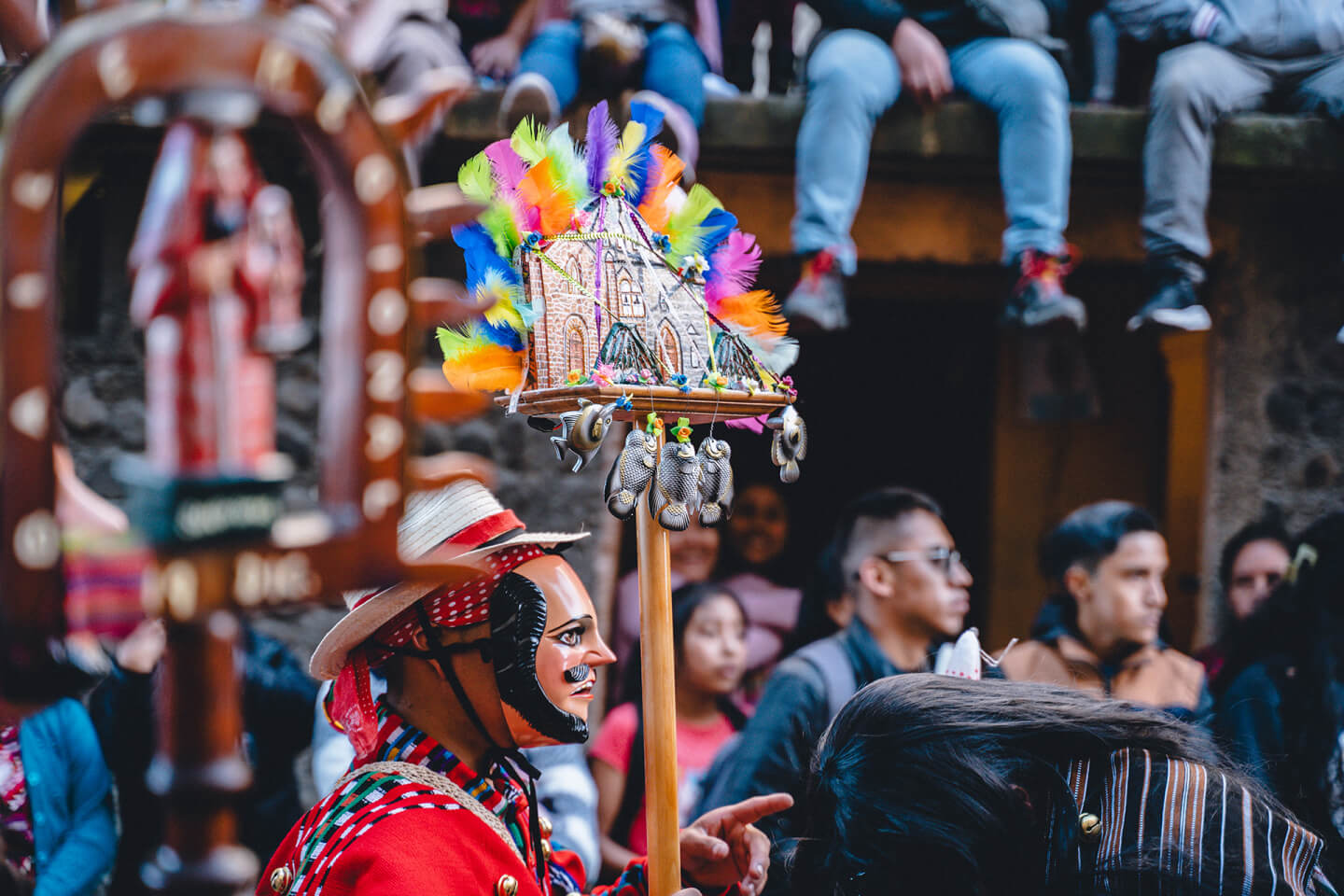

It serves as a reminder of the first Catholic Liturgy that was held in Chichi on 21 December 1540 and was dedicated to Saint Thomas. So he became a patron of the town.
In addition to processions, games and costumed dances, this holiday is famous for Maya flights in traditional clothes from a very high pole, El Palo Volador: volunteers climb a high pole, grab a rope and descend, holding onto a rope and drawing circles in the air. The dances are organized right on the market square in the middle of the stalls: the cofradías agree in advance with the sellers to leave enough space between the rows for the procession.
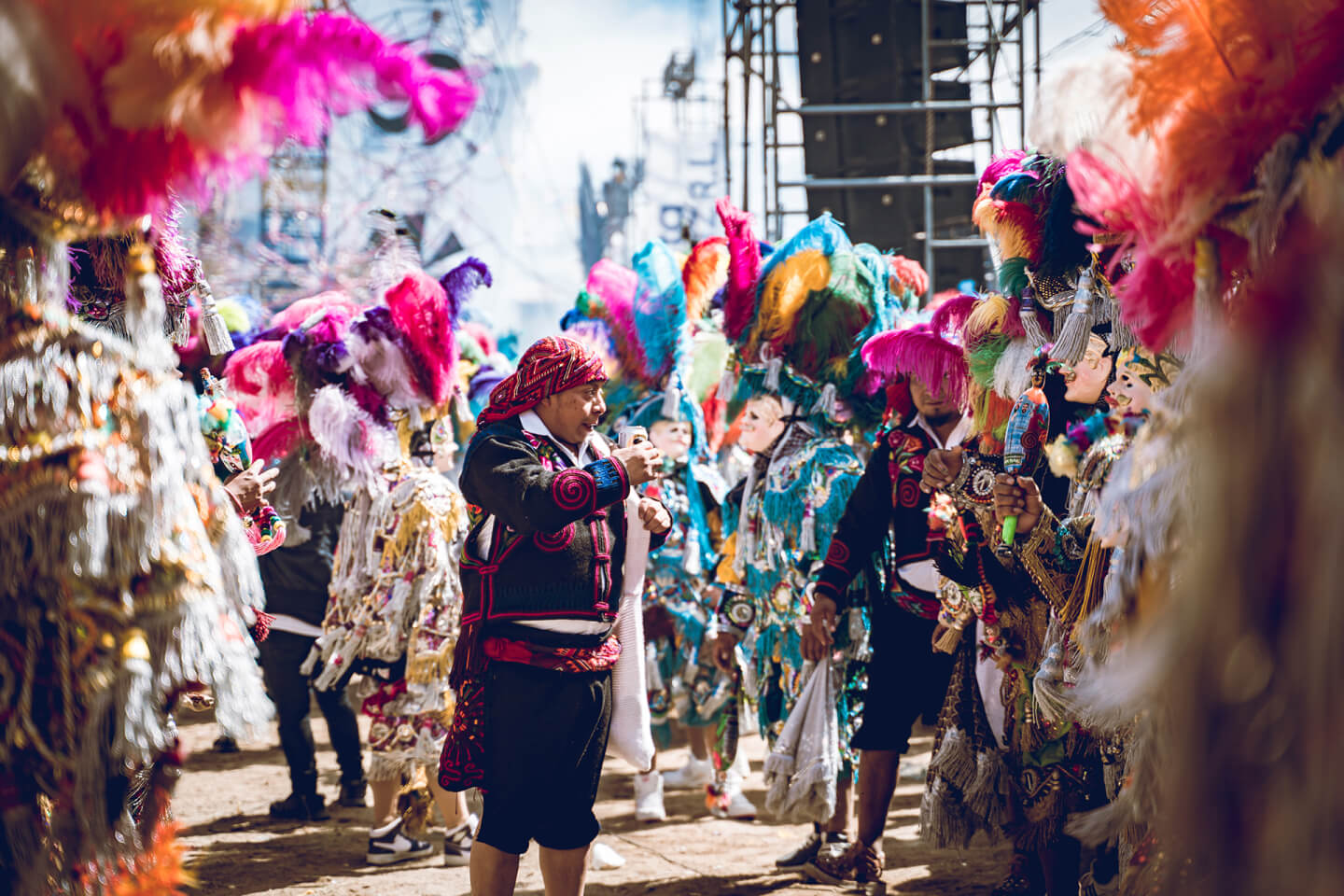
Chichicastenango, Quiché Department, Kʼicheʼ tribe. 2023. JFernando Morales Photography
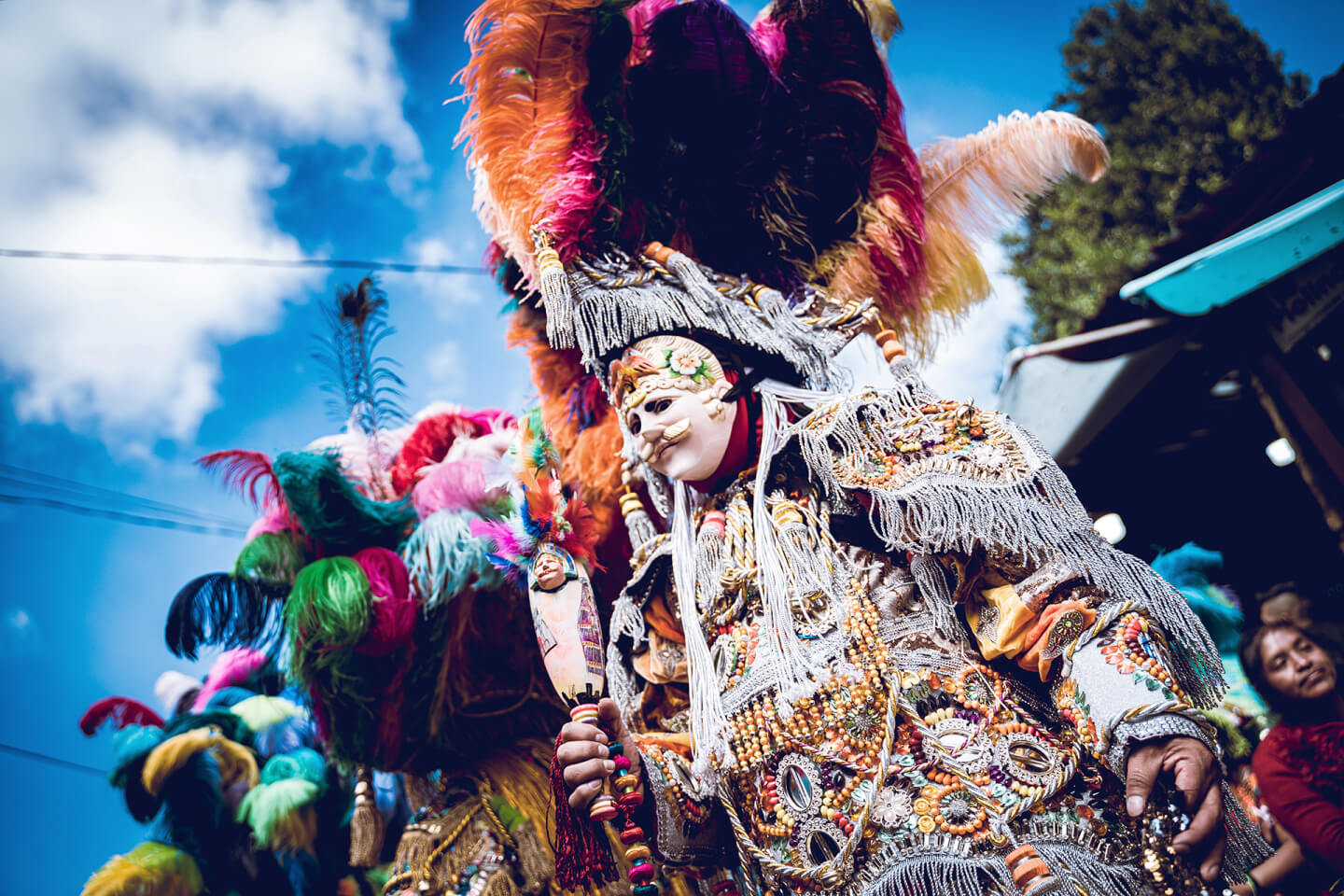
Chichicastenango, Quiché Department, Kʼicheʼ tribe. 2023. JFernando Morales Photography
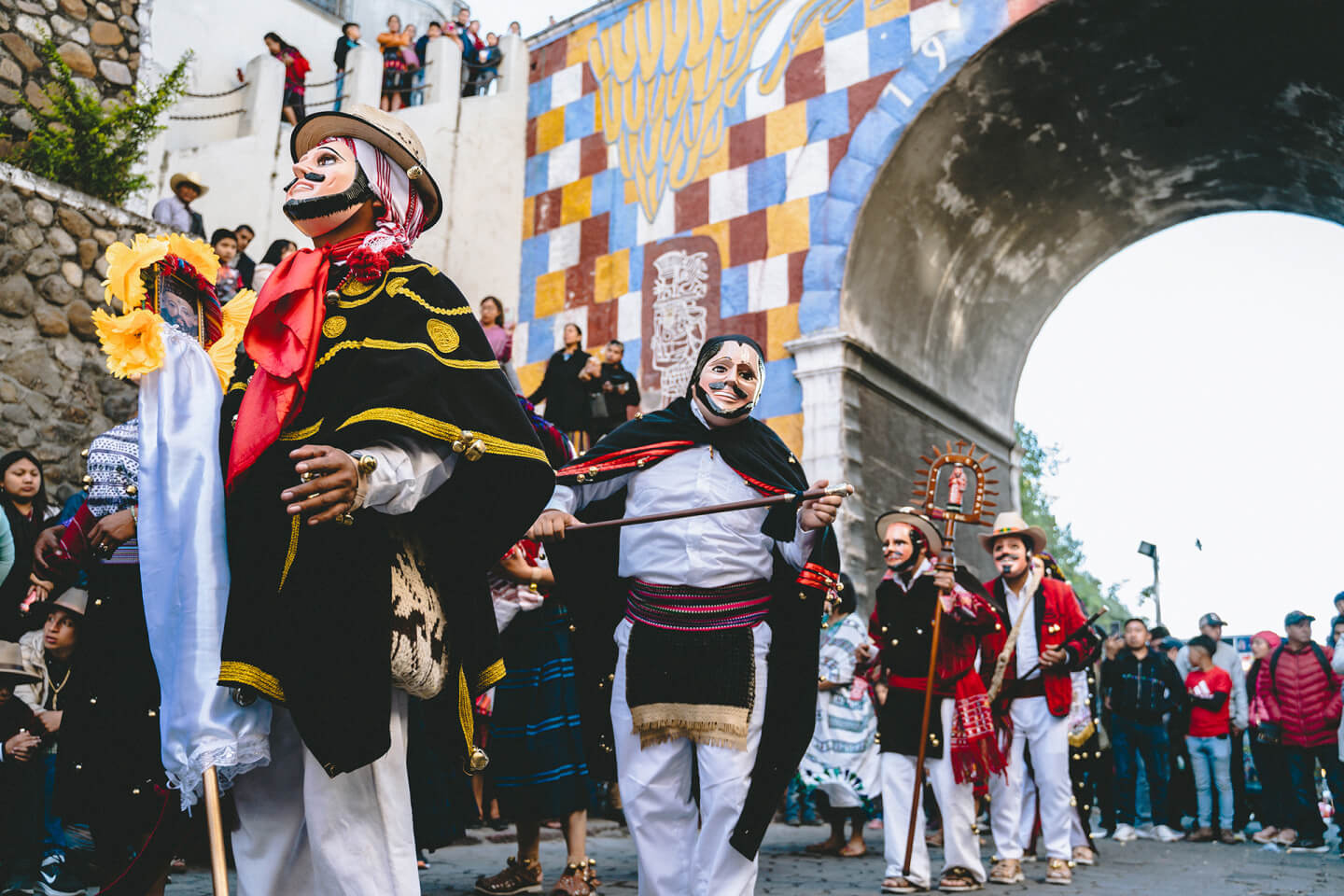
Chichicastenango, Quiché Department, Kʼicheʼ tribe. 2023. JFernando Morales Photography


Cesar Aguilar
archaeologist, specialist in sustainable tourism
Catholic priests come to Chichicastenango from other countries, but they have no choice: if the Catholic Church was not ready to accept local beliefs, it would never be able to settle and gain a foothold there.

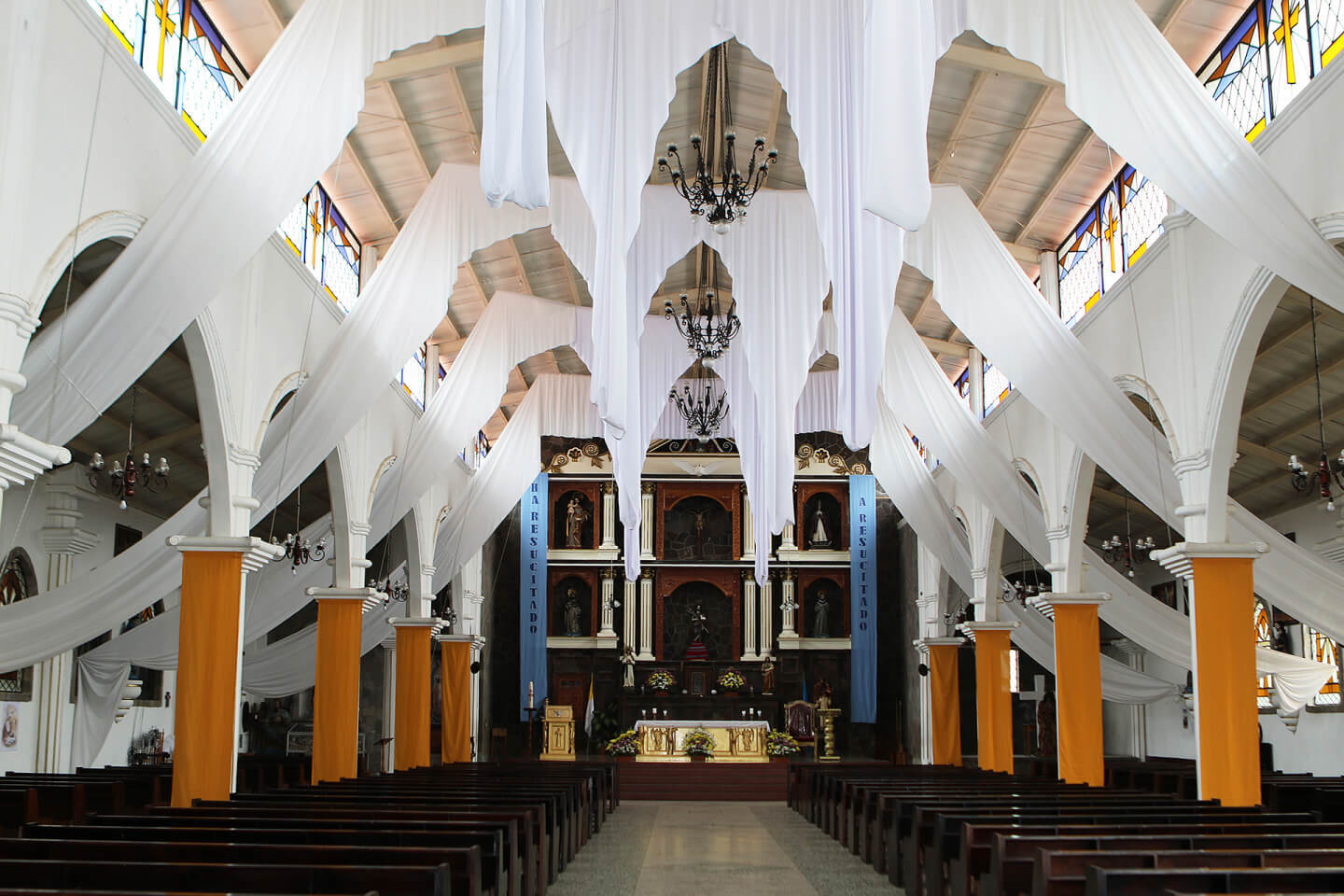
San Juan La Laguna, Sololá Department. 2018.
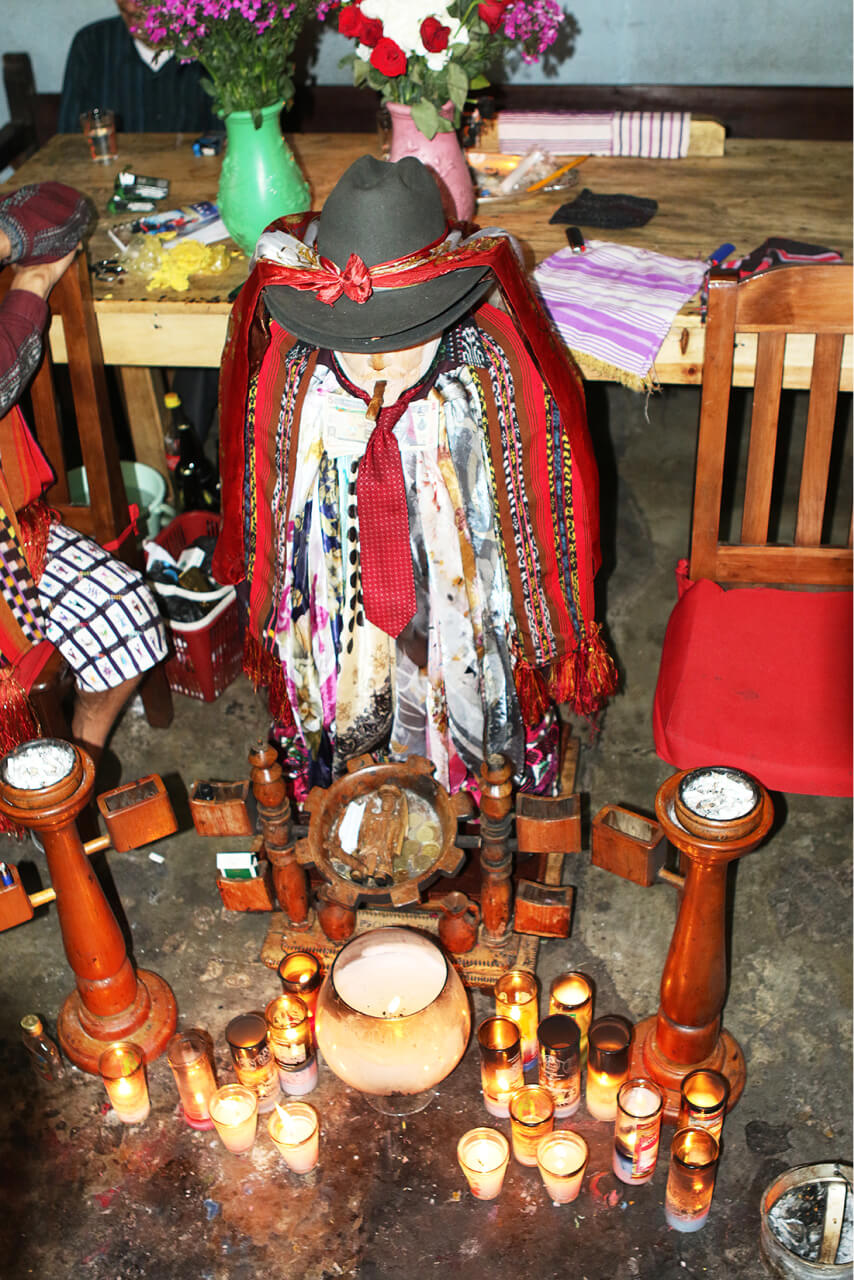
For example, in Santiago Atitlán, the altar of the temple was destroyed by an earthquake. And a North American priest, later killed in an armed conflict with the Guatemalan army, agreed to have the main altar rebuilt using elements of local culture.
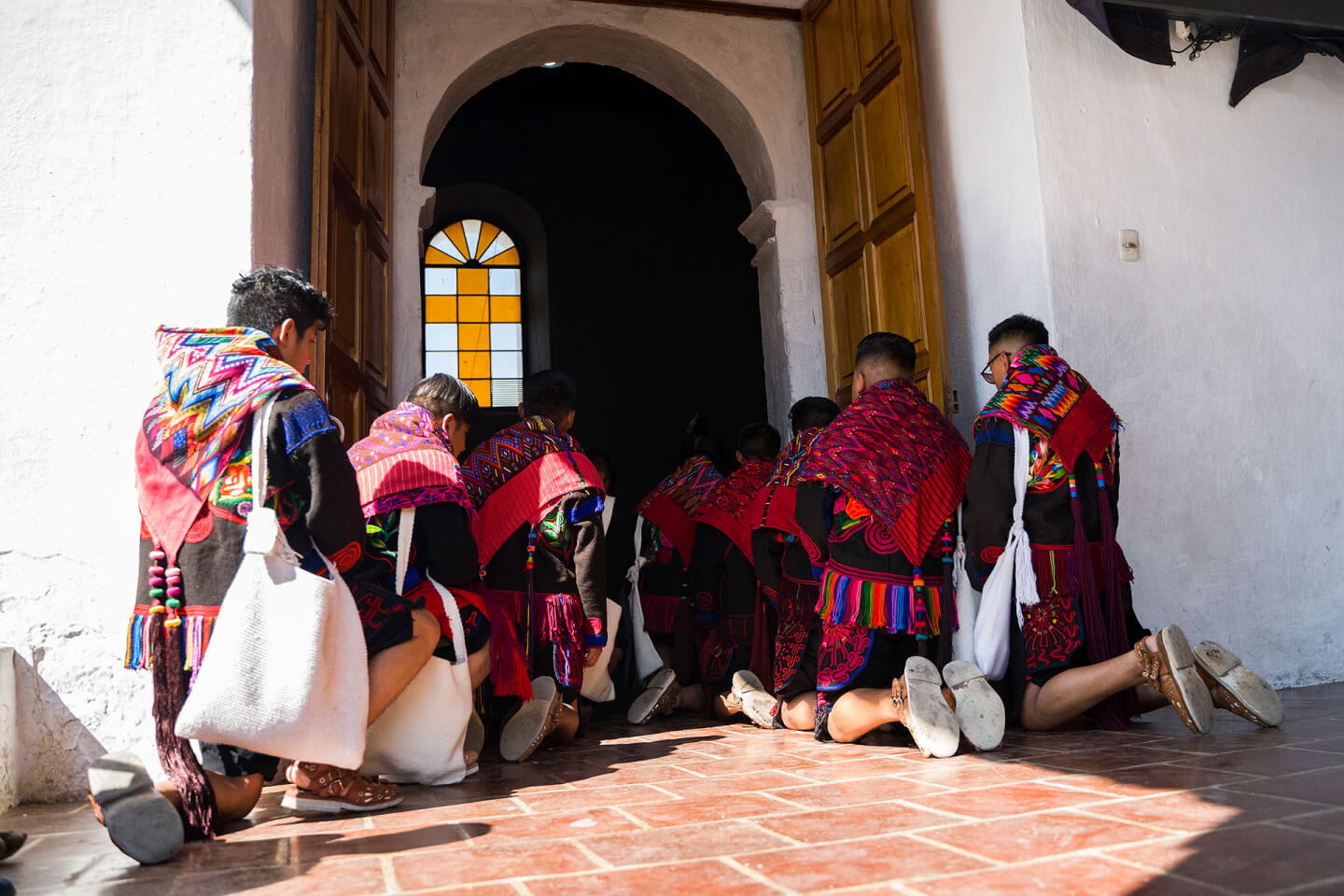
There, for example, appeared Maximón, a Maya saint, whose figure has been revered in Guatemala since ancient times. And all the saints depicted there are dressed in Indian clothes. The procession, which is organized during Easter week and dedicated to Maximón, is much larger and more important than the one dedicated to Jesus.
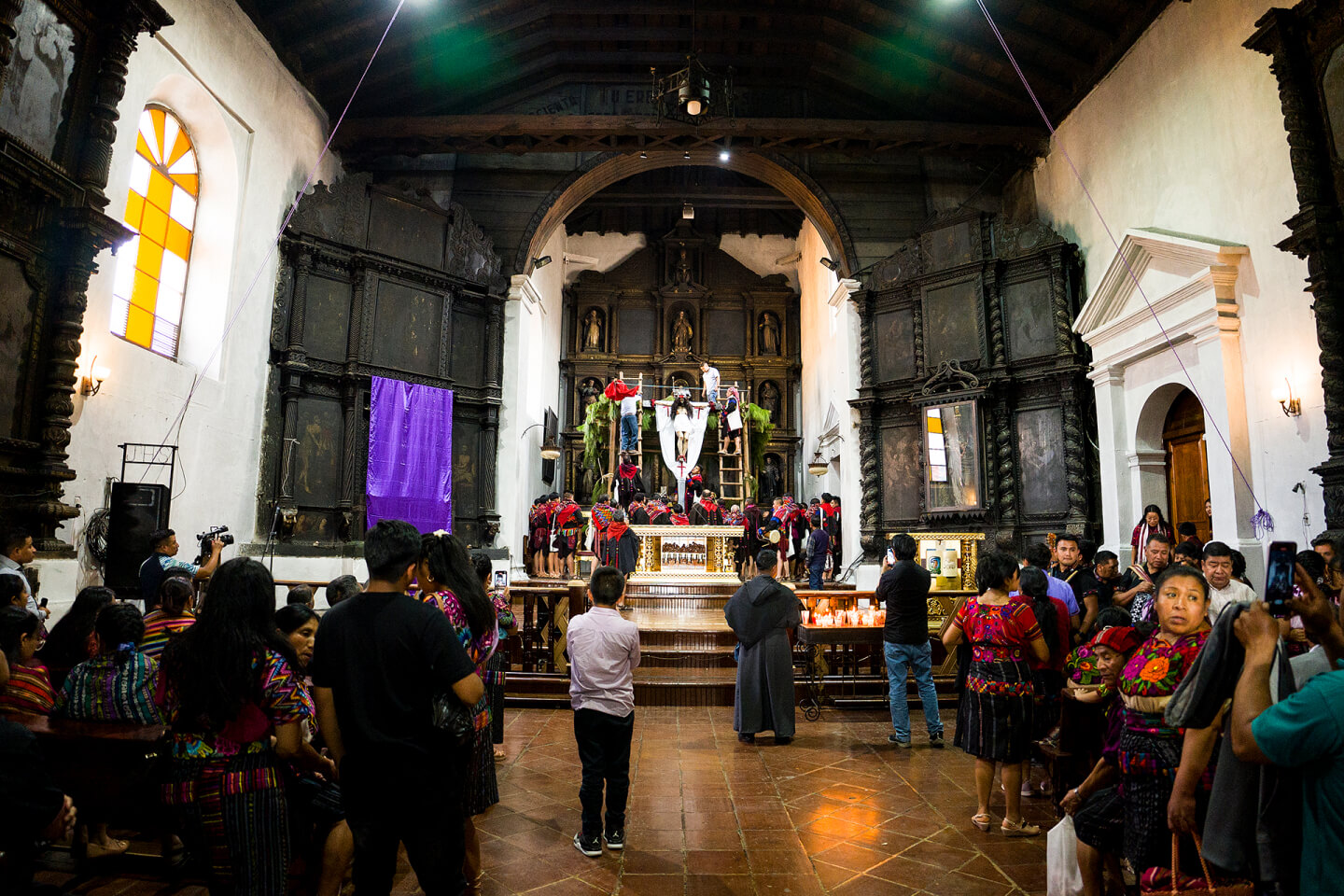
The statue of Maximón. His images in various forms, including in smaller sculptures, can also be purchased on the market — as a rule, this saint is approached for money, problem solving or to help win a woman’s heart. Santiago Atitlan, Solola Department, 2018.
Chichicastenango, Quiché Department, Kʼicheʼ tribe. 2024. JFernando Morales Photography
In Chichicastenango in Santo Tomas, people bring alcohol, flowers and notes not only to Jesus, but also to their gods. And if in some places the priests did not accept this state of affairs, they were expelled from the community. The Catholic Church has to be flexible.


This flexibility of the Catholic Church in this territory is a legacy left by the conquest in the XV century. The Catholic Church and the Spanish crown marched in step on their new territories. They converted every single soul remaining alive after the arrival of the conquistadors to Christianity and received their lion’s share of wealth.
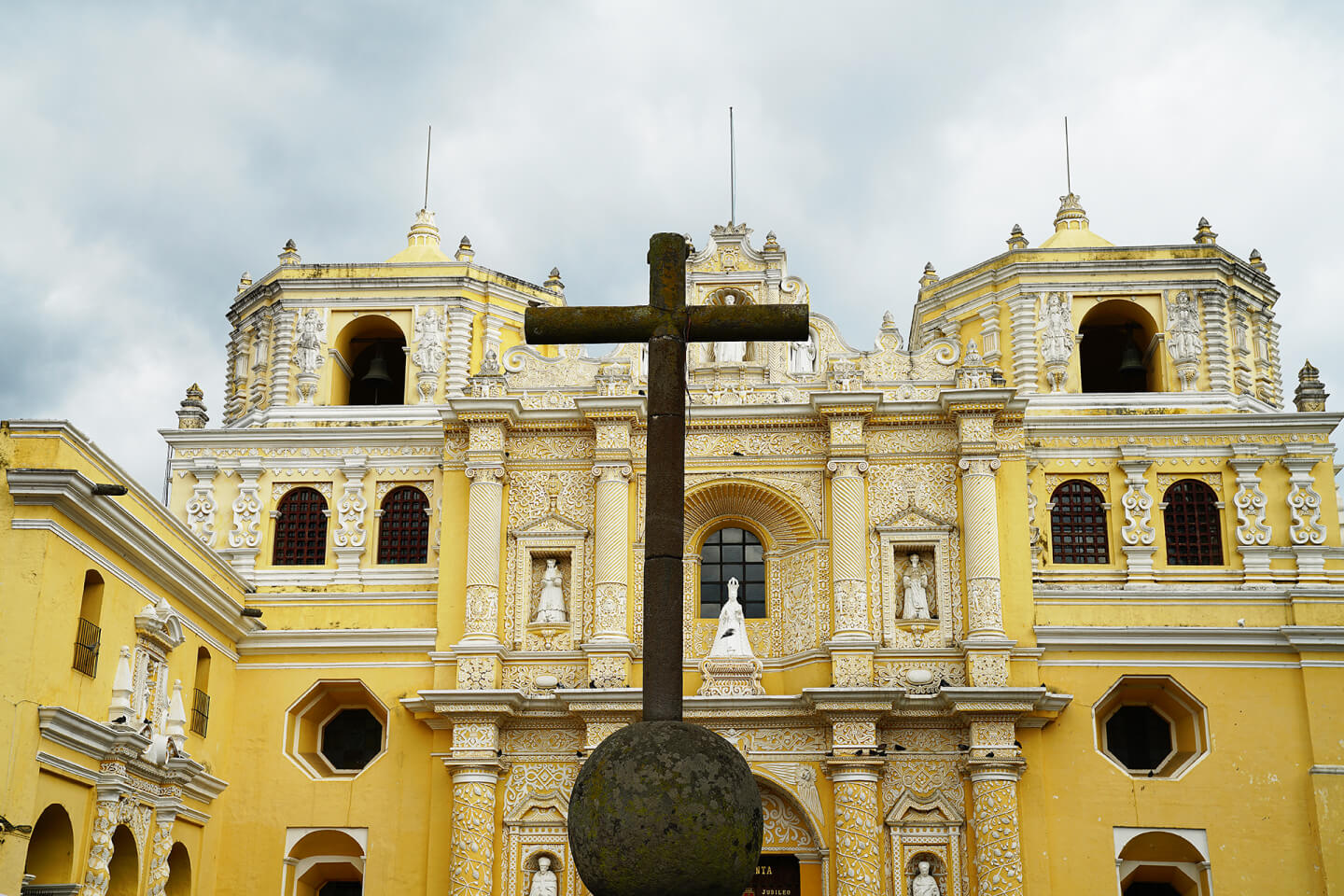
Protestantism came much later, as a second wave. The first mission was organized in 1843, but it was only in 1882 when Protestantism gained a foothold in the country.
At the end of the twentieth century, thanks to the demographic boom in Protestant communities, the number of Guatemalans professing this religion has grown significantly and today, it stands at about 40%, mainly in the north of the country in the highlands.
Nuestra Señora de La Merced Catholic Churcs in Antigua, Guatemala, 2018.


In this crusade across the New World, the Catholic Church implemented two strategies. The first one considered all Indians as savages, and thus they and everything that they had should have been devastated. The second strategy, which finally won in Guatemala, was much more "humanistic". It implied taking into account local beliefs, using them in converting locals to the Christian faith, and perceiving the local population as having the potential for Catholicism.
Christianity in Guatemala
This was a clever move to use the local population in the long term. Not devastating them but using them to multiply the riches of the Spanish crown. Thanks to this approach, some architectural monuments and shrines have been preserved, as well as local beliefs, which serve as the basis for syncretism today.


Cesar Aguilar
archaeologist, specialist in sustainable tourism
With Protestantism, everything is much more complicated. It is much more strict than Catholicism. Mostly because of this, the Protestants caused great damage to the Maya culture at the time, destroying shrines and monuments. But now they also have to adjust and accept clothes, Maya traditions and rituals.


An example of such syncretic Protestantism is the commune of Almolonga, where 95% of the population belongs to this denomination. There is a Catholic church there too, but it is almost always closed — no one goes there. Here, the Catholic Church lost not even to the beliefs of the Maya, but to Protestantism.


The main bearers of Maya knowledge, as well as the main participants in Sunday liturgy throughout Guatemala, are brotherhoods, or cofradías. They originate in Europe, where professional or religious communities were called by this term. But in Guatemala, they got completely new functions. They became the guardians and promoters of Maya culture, religious traditions, ceremonies and myths.

The elders of the municipality run the workshops — they are the ones who have sufficient knowledge to ensure that the rituals are performed correctly. At first, these were purely religious communities, whose main duties included caring for shrines and participating in weekly liturgy. However, over time, other social and cultural functions have been added to them. For instance, the solving of family conflicts and property disputes. The heads of cofradías report directly to the Indian mayor of the town. Images of saints and patrons are kept in their houses, and the whole family takes part in the performance of rituals.
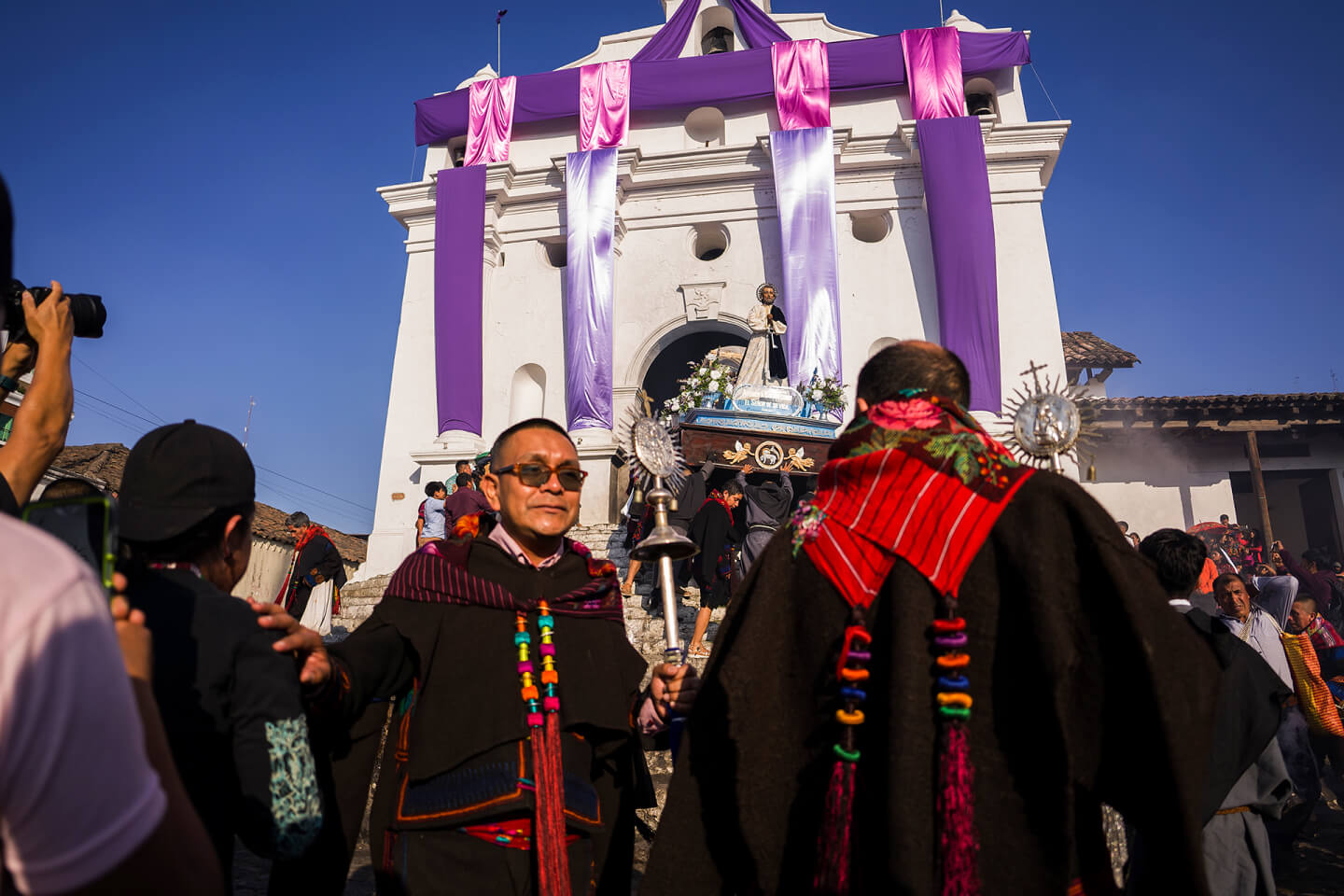
Chichicastenango, Quiché Department, Kʼicheʼ tribe. 2024. JFernando Morales Photography
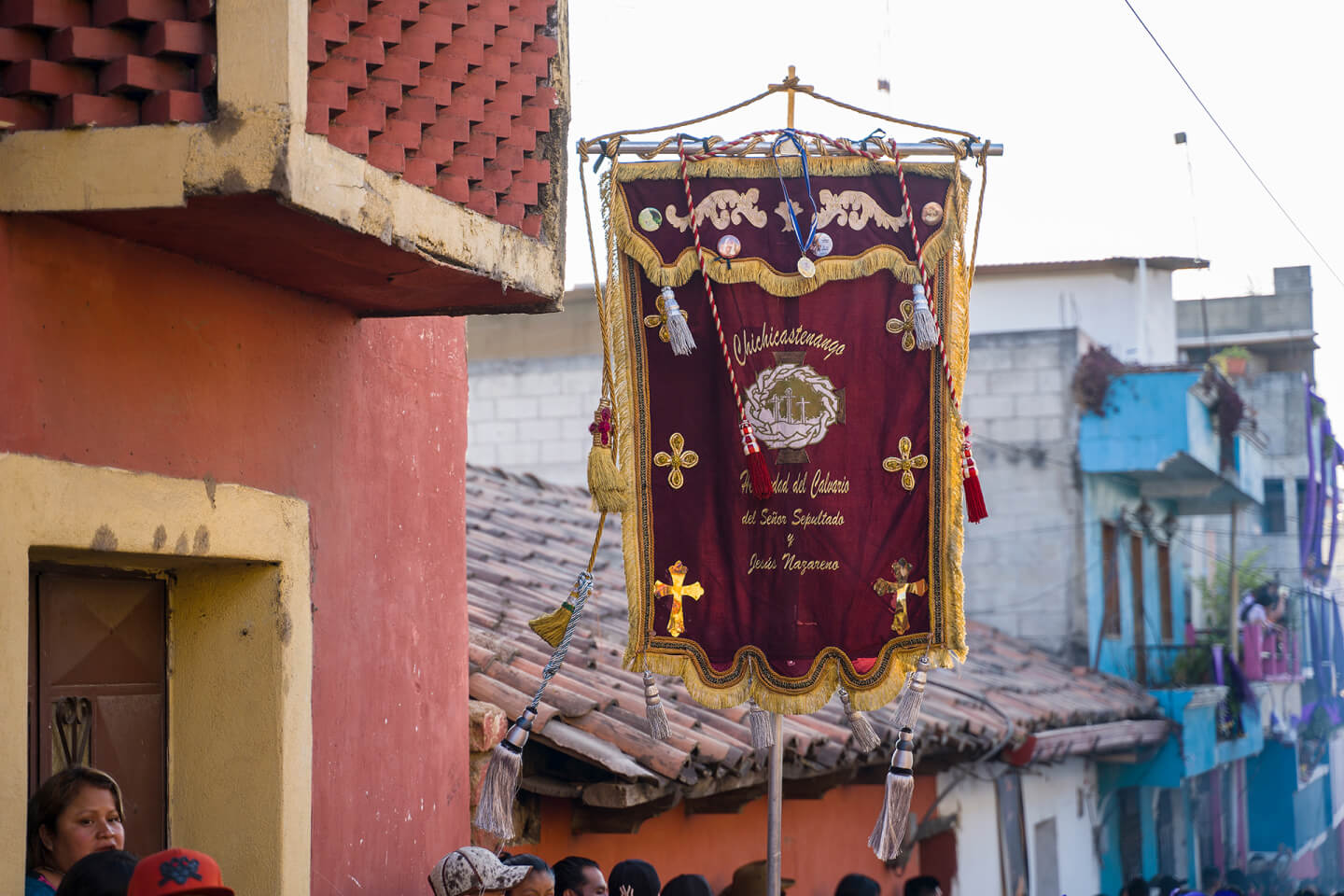
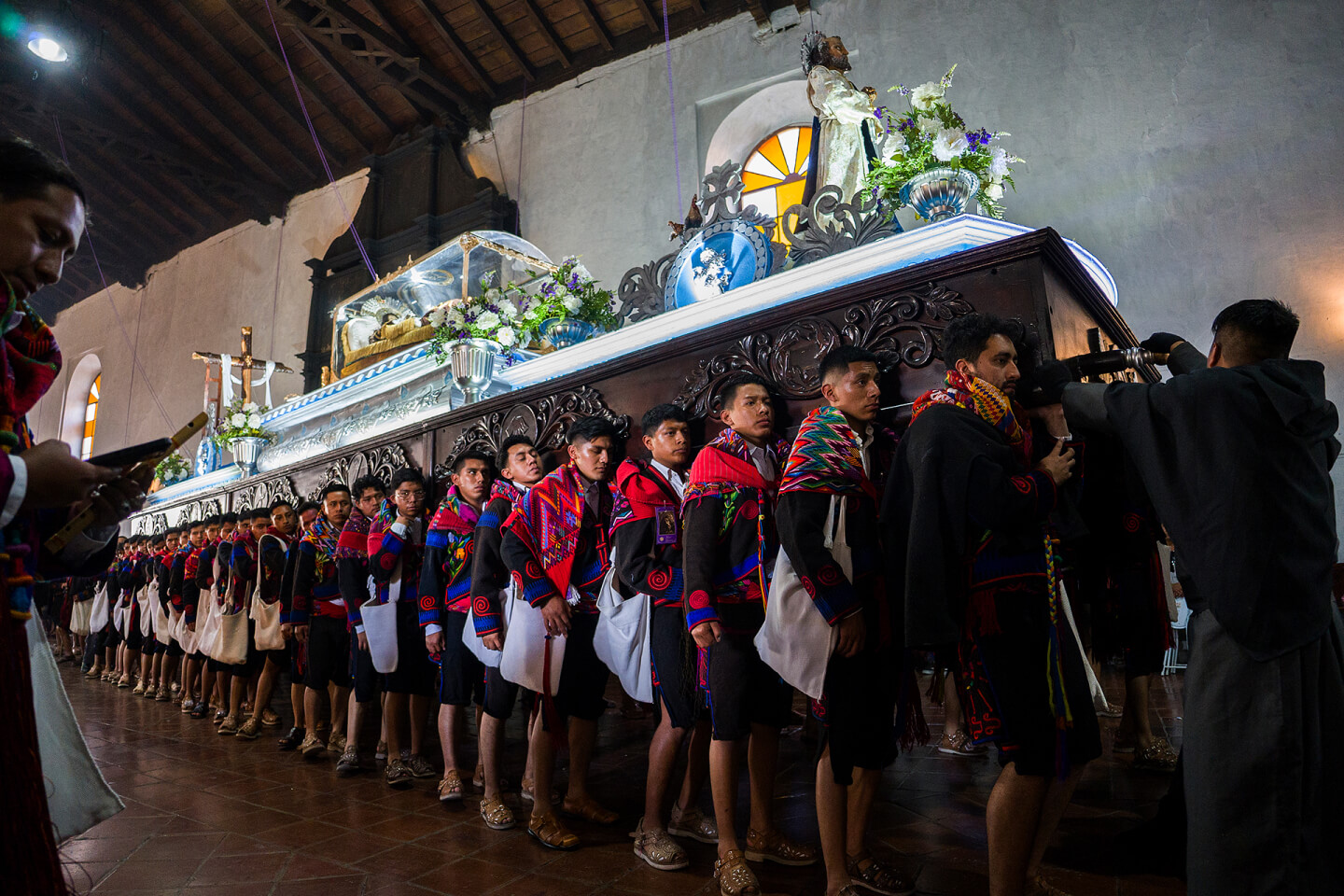
Chichicastenango, Quiché Department, Kʼicheʼ tribe. 2024. JFernando Morales Photography

There are fourteen cofradías in Chichicastenango. All are representatives of the Indian administration in the municipality. The main ones are Santo Tomás, San Sebastián and San José. On Sunday, they all gather together to go to liturgy.

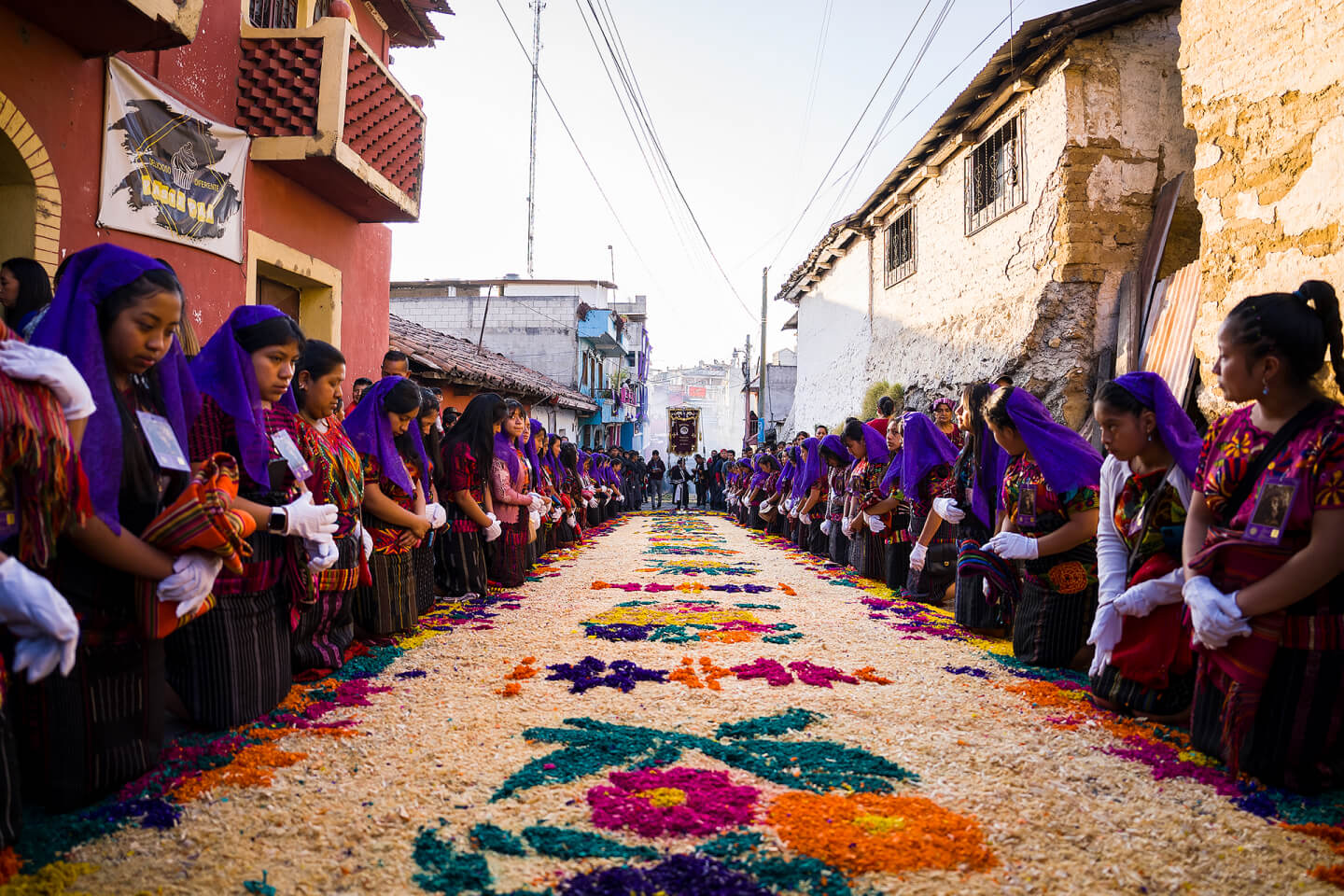
They carry the statue of the saint through the streets on a stretcher, then put it in a special place in the church, where it remains throughout the ceremony, and at the end they return it back to its place of storage until next week.
Easter week procession. Chichicastenango, Quiché Department, Kʼicheʼ tribe. 2024. JFernando Morales Photography
They carry the statue of the saint through the streets on a stretcher, then put it in a special place in the church, where it remains throughout the ceremony, and at the end they return it back to its place of storage until next week.
Easter week procession. Chichicastenango, Quiché Department, Kʼicheʼ tribe. 2024. JFernando Morales Photography
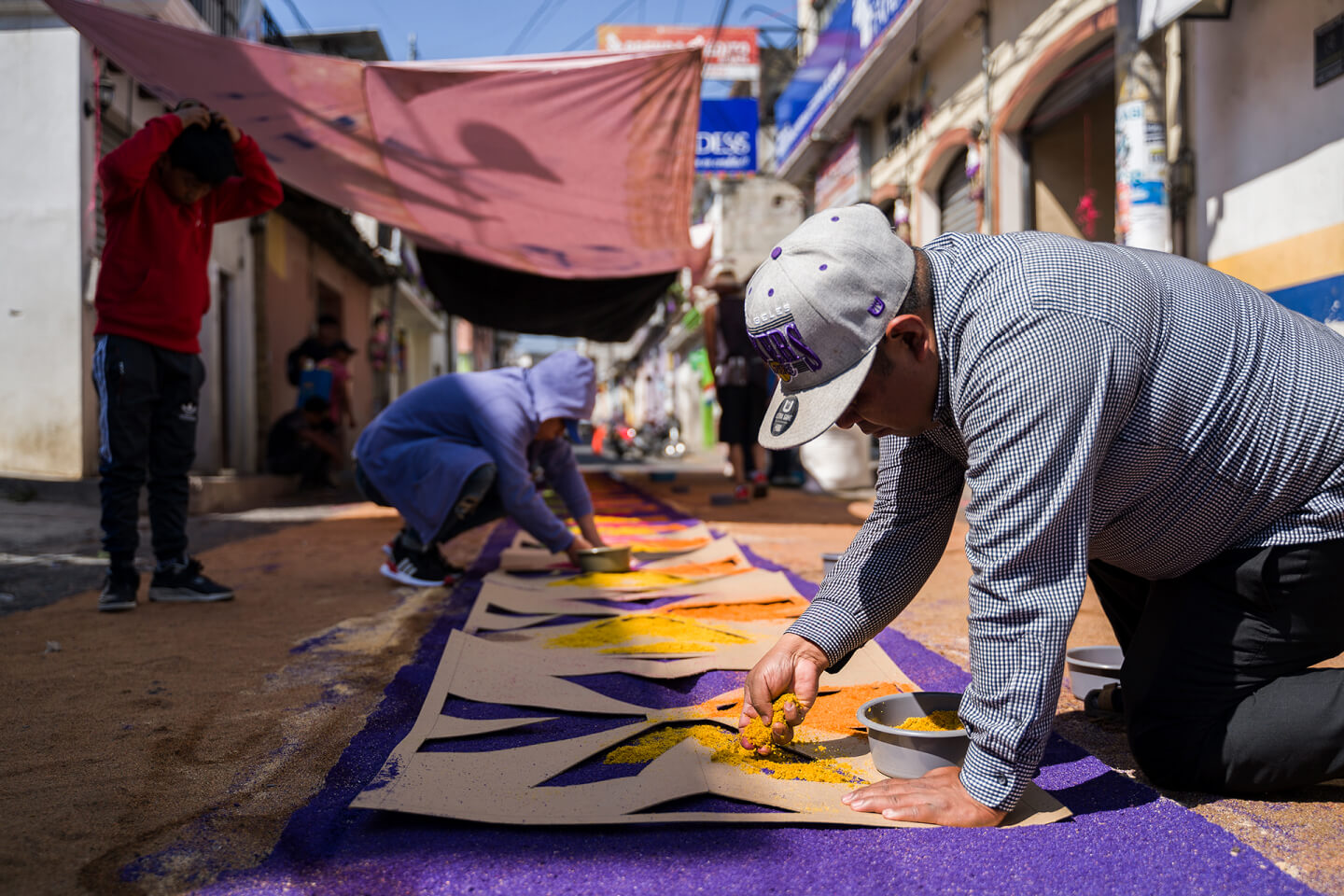
They carry the statue of the saint through the streets on a stretcher, then put it in a special place in the church, where it remains throughout the ceremony, and at the end they return it back to its place of storage until next week.
Easter week procession. Chichicastenango, Quiché Department, Kʼicheʼ tribe. 2024. JFernando Morales Photography
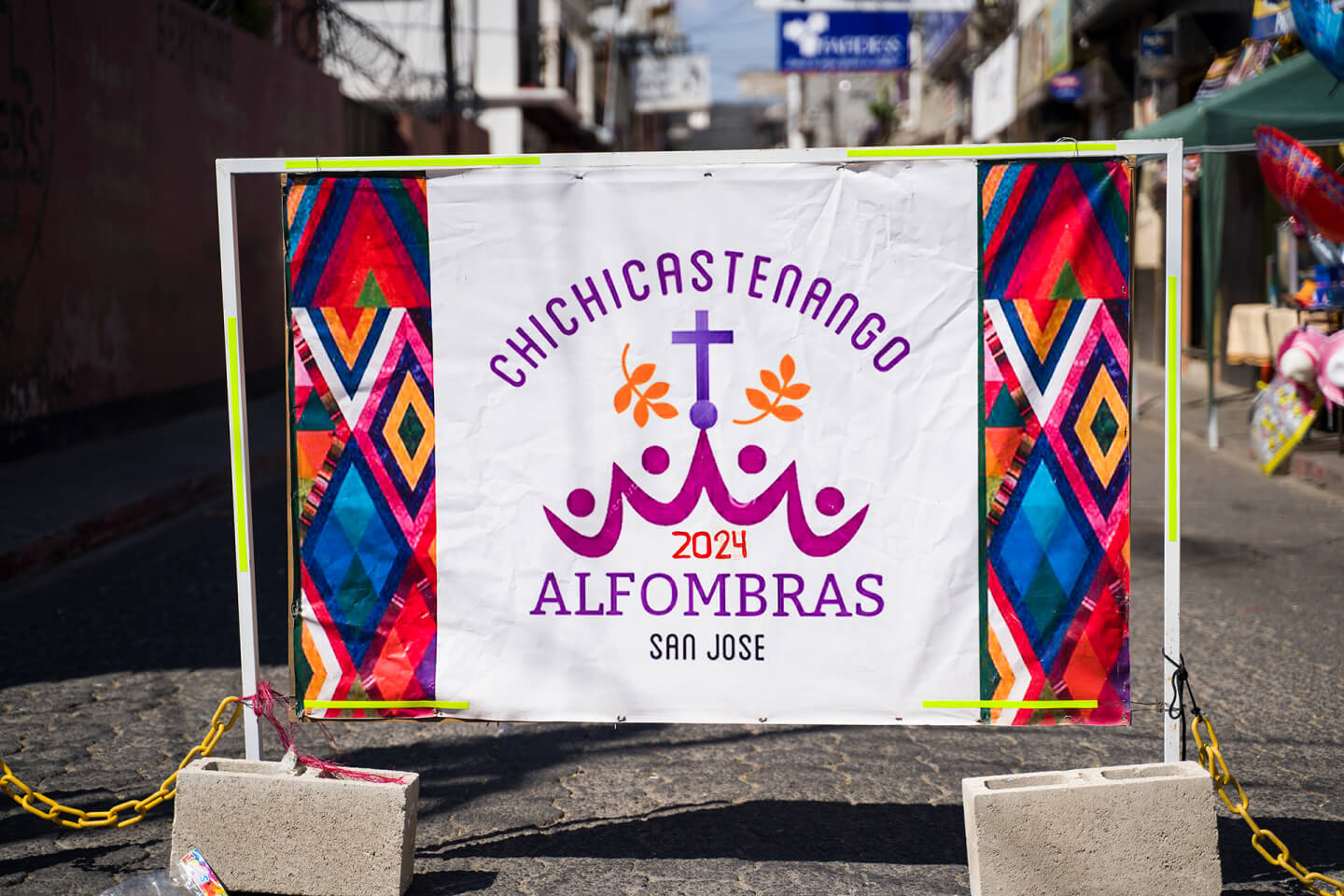
They carry the statue of the saint through the streets on a stretcher, then put it in a special place in the church, where it remains throughout the ceremony, and at the end they return it back to its place of storage until next week.
Easter week procession. Chichicastenango, Quiché Department, Kʼicheʼ tribe. 2024. JFernando Morales Photography
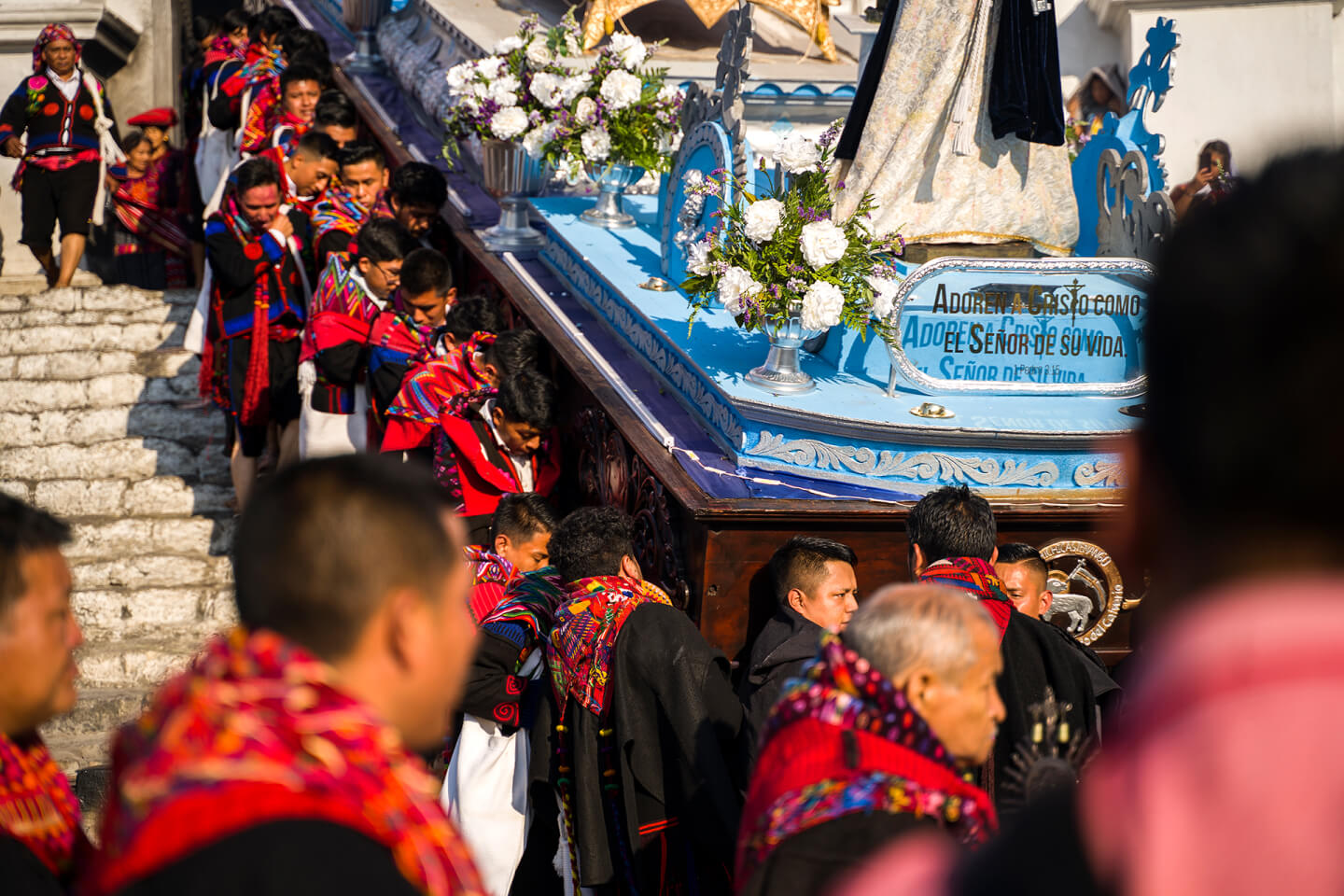
They carry the statue of the saint through the streets on a stretcher, then put it in a special place in the church, where it remains throughout the ceremony, and at the end they return it back to its place of storage until next week.
Easter week procession. Chichicastenango, Quiché Department, Kʼicheʼ tribe. 2024. JFernando Morales Photography
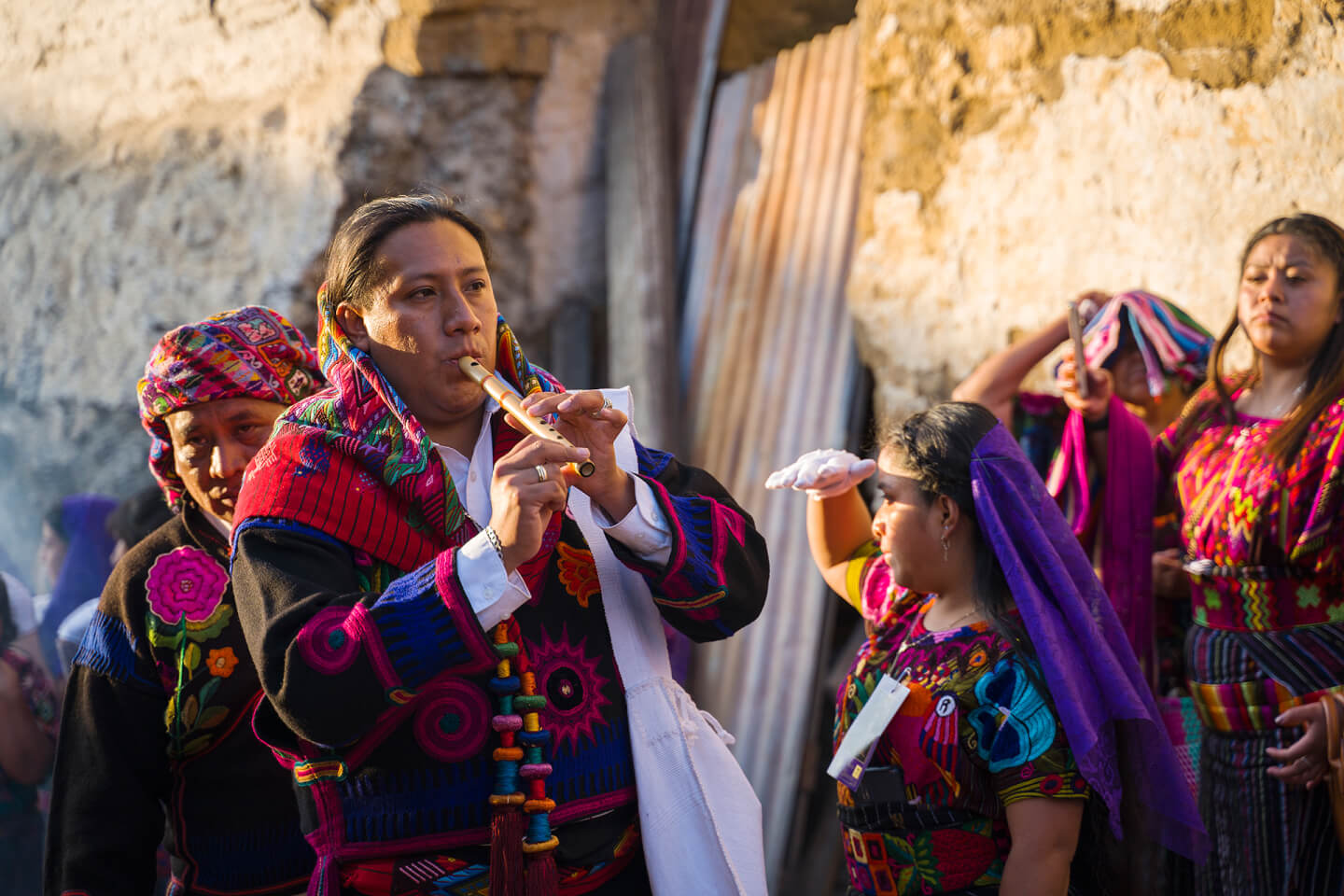
They carry the statue of the saint through the streets on a stretcher, then put it in a special place in the church, where it remains throughout the ceremony, and at the end they return it back to its place of storage until next week.
Easter week procession. Chichicastenango, Quiché Department, Kʼicheʼ tribe. 2024. JFernando Morales Photography
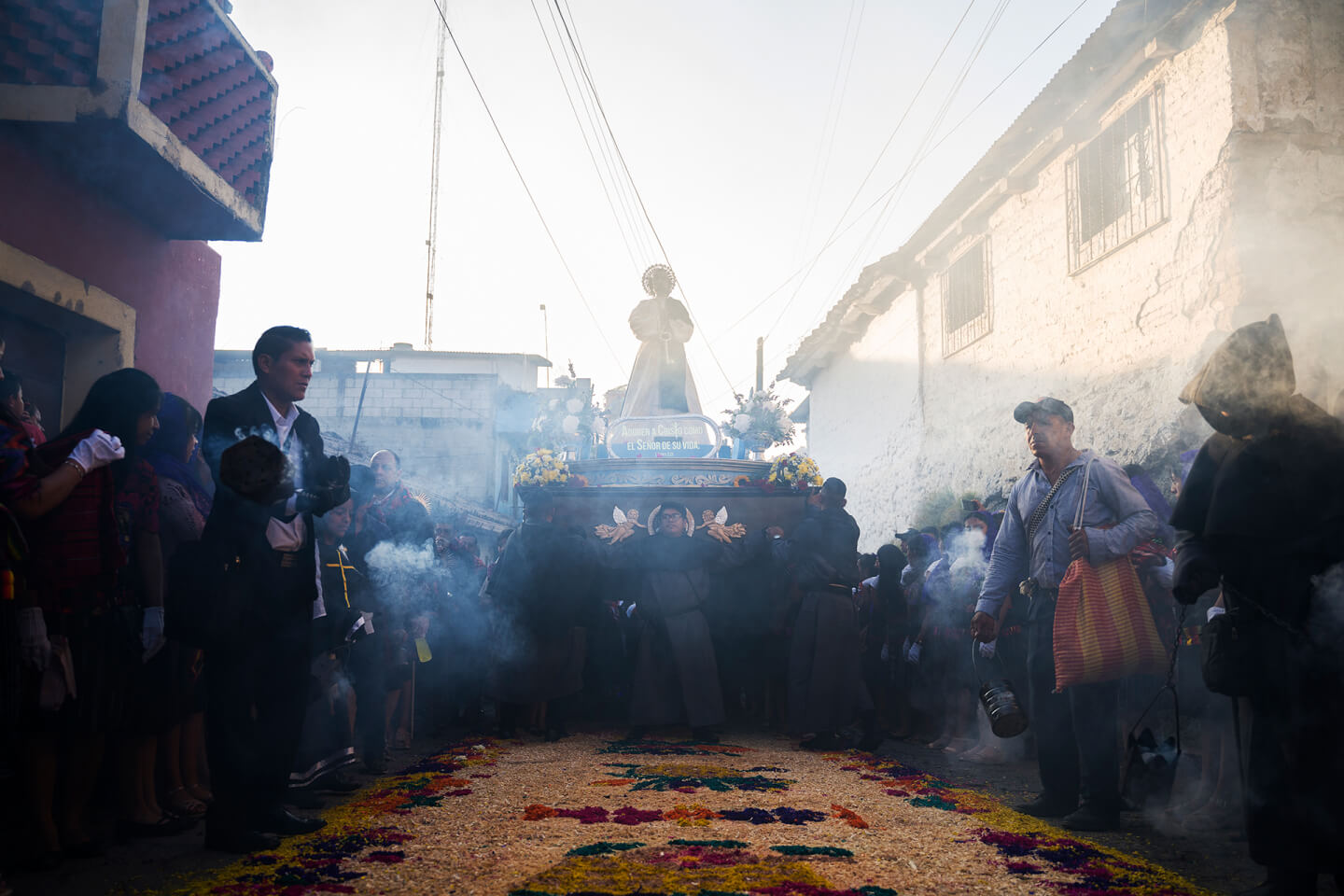
Roberto Sebastian Nix
guide, resident of Chichicastenango
The members of the cofradías change every year, as do the houses where the cofradías are based. The Indian municipality selects new members of the brotherhood, depending, among other things, on their financial situation, because this is a year round full-time job. The cofradías take care of statues and shrines.

Each participant needs to buy a local festive costume. It is quite expensive, 15−16 thousand quetzal, which is about 1800 euros. The price is so high because it is a handmade piece of clothes, with a lot of embroidery and details.
A women’s cheapest suit is not so expensive, about 2,500 quetzal (around 320 US dollars in May 2024). The more complicated the design is, the more expensive it gets. Therefore, every woman has only 3−5 suits, and to buy them, you have to work hard and save up.
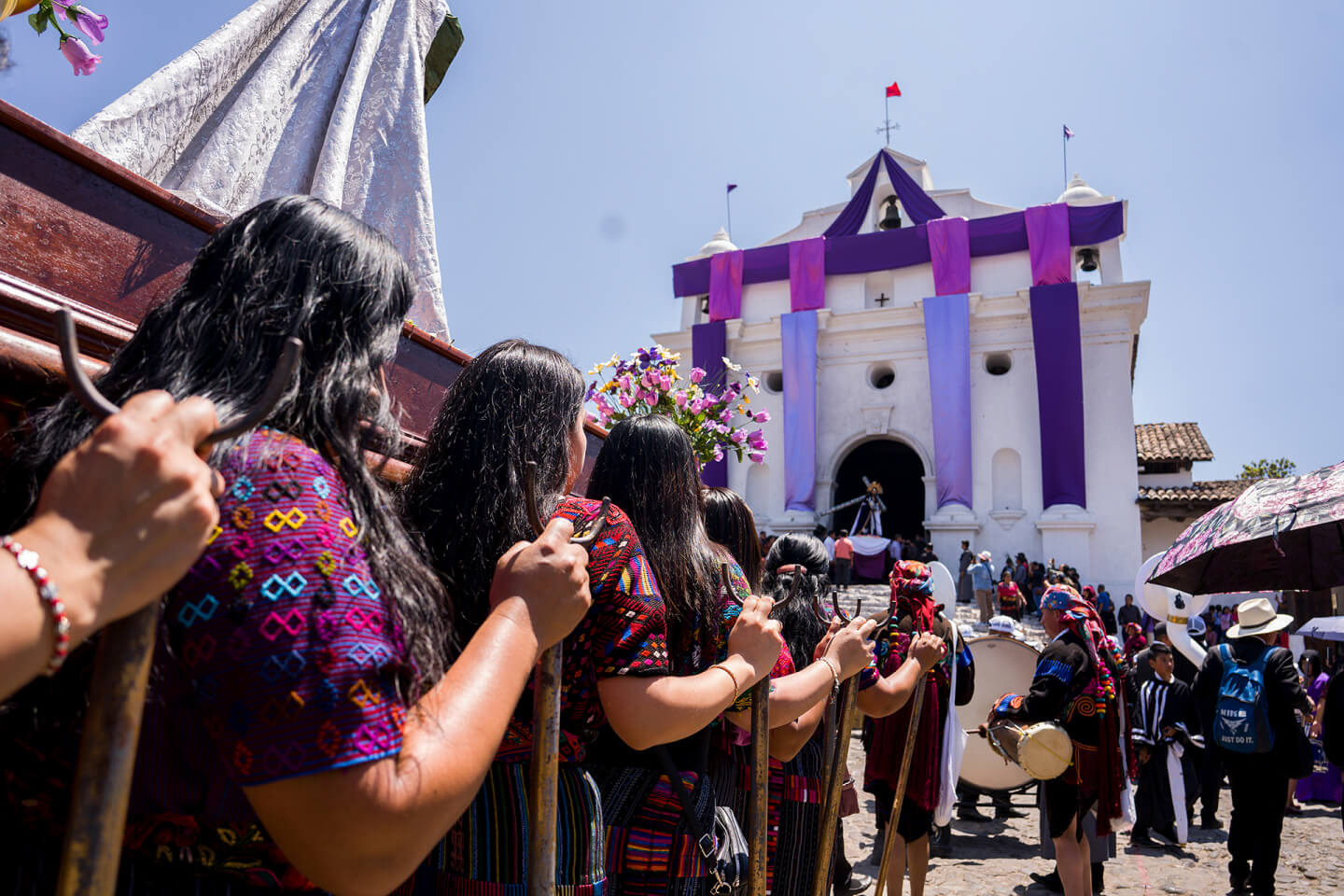
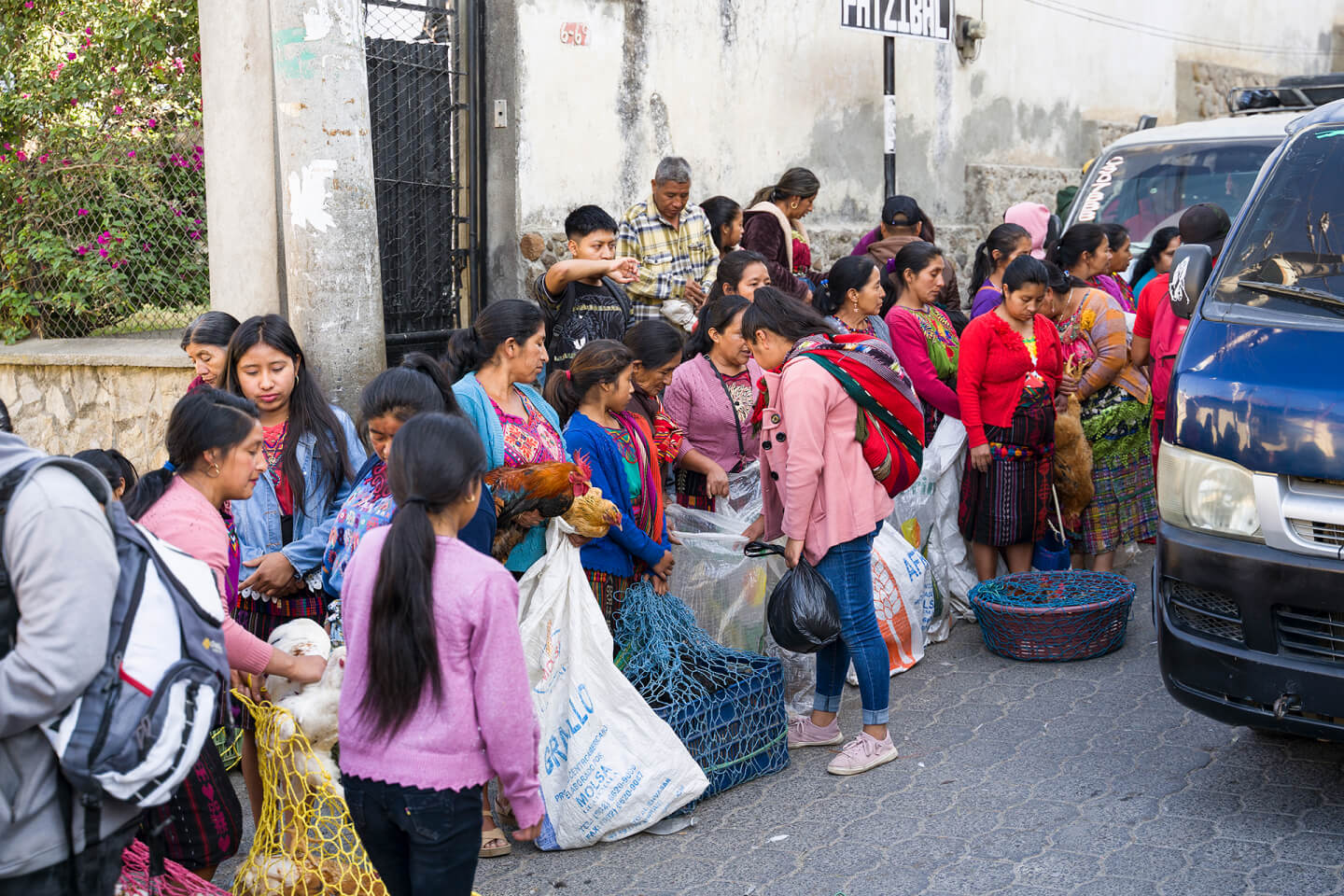
Every year in December, the local municipality searches for and invites candidates to participate in the brotherhood. Those, in turn, have the right to decide whether they are capable of taking on these responsibilities for the coming year.
Chichicastenango, Quiché Department, Kʼicheʼ tribe. 2024. JFernando Morales Photography



Due to serious economic problems in the country, there is an inevitable outflow of population. More and more young people are going to study abroad, more and more hale and hearty men are going to work to somehow feed their family. But many of them do not forget their roots.
The numerous Guatemalan diaspora in the United States provides serious support to local brotherhoods throughout the country — many went there to work, but continue to support not only their families, but also traditions.
According to estimates for 2021, the number of immigrants from Guatemala to the United States exceeded 1,200,000 people. Immigrants send money home to their families and these sums account for a decent share of the country’s economy.



Money for the support of the community is sent to the accounts of cofradías. Besides, costumes, masks are bought for them — everything necessary for holding and organizing holidays. They often finance the construction and renovation of local churches. This is a good example of forced relocation, which not only does not break the ties, but in many ways contributes to their strengthening.


Conclusion
We dedicated this project to a very ambiguous place. Chichicastenango is extremely controversial from the point of view of both the scientific community and the Guatemalans themselves.

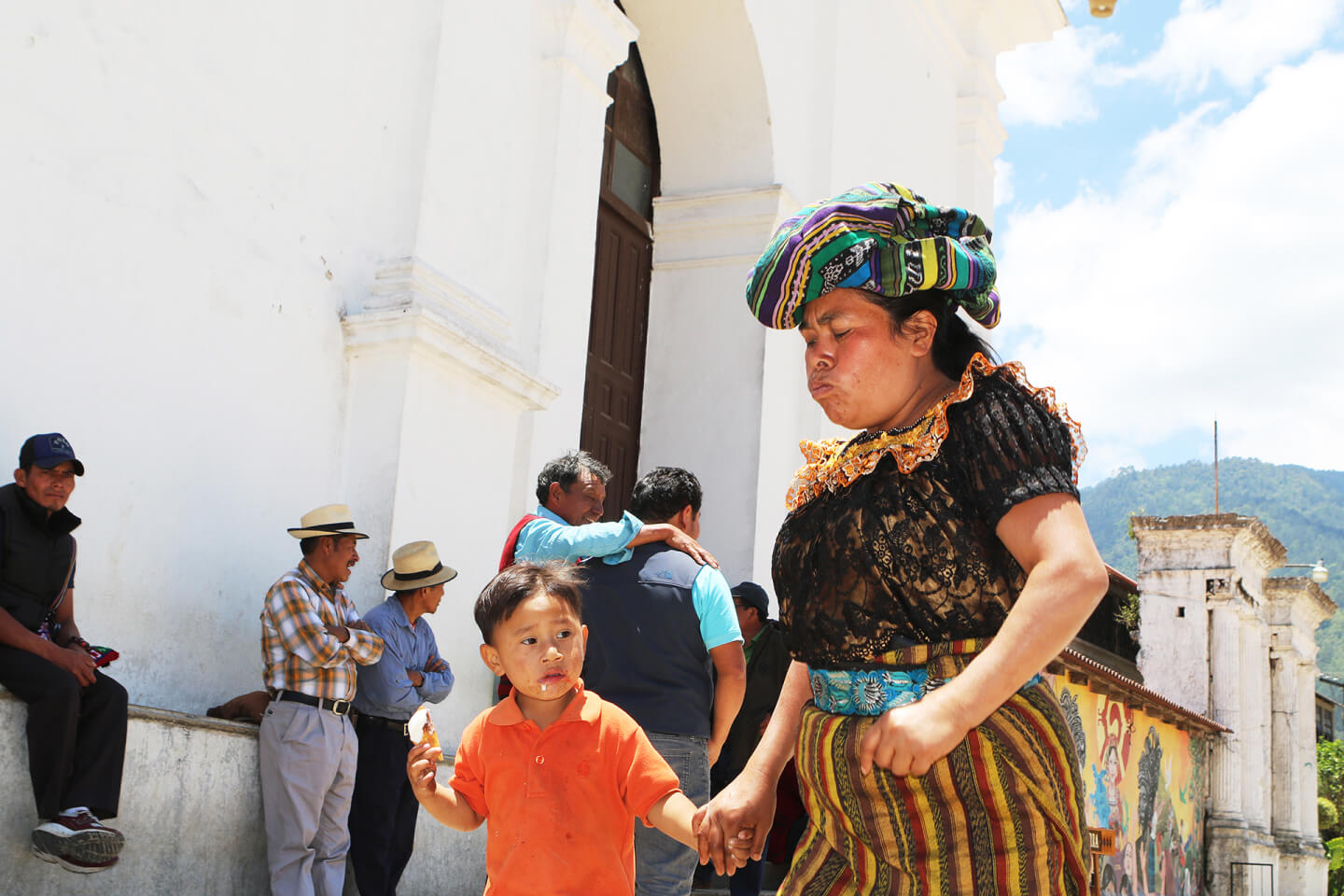
Santa Maria Nebaj, Quiché Department. 2018.



Cesar Aguilar, an archaeologist with whom we have talked a lot about the history and future of his country, considers Chichicastenango a dead place (though with a glimmer of hope for revival). This is mainly because of the total commercialization of the image of the settlement and its traditions, which inevitably leads to a blurring of the authenticity and uniqueness of the people.
This also affected the image of the city as a whole among the Guatemalans themselves. Undoubtedly, it varies from people to people, but they are united by the perception of Chichi as a hype and not worthy of their attention.
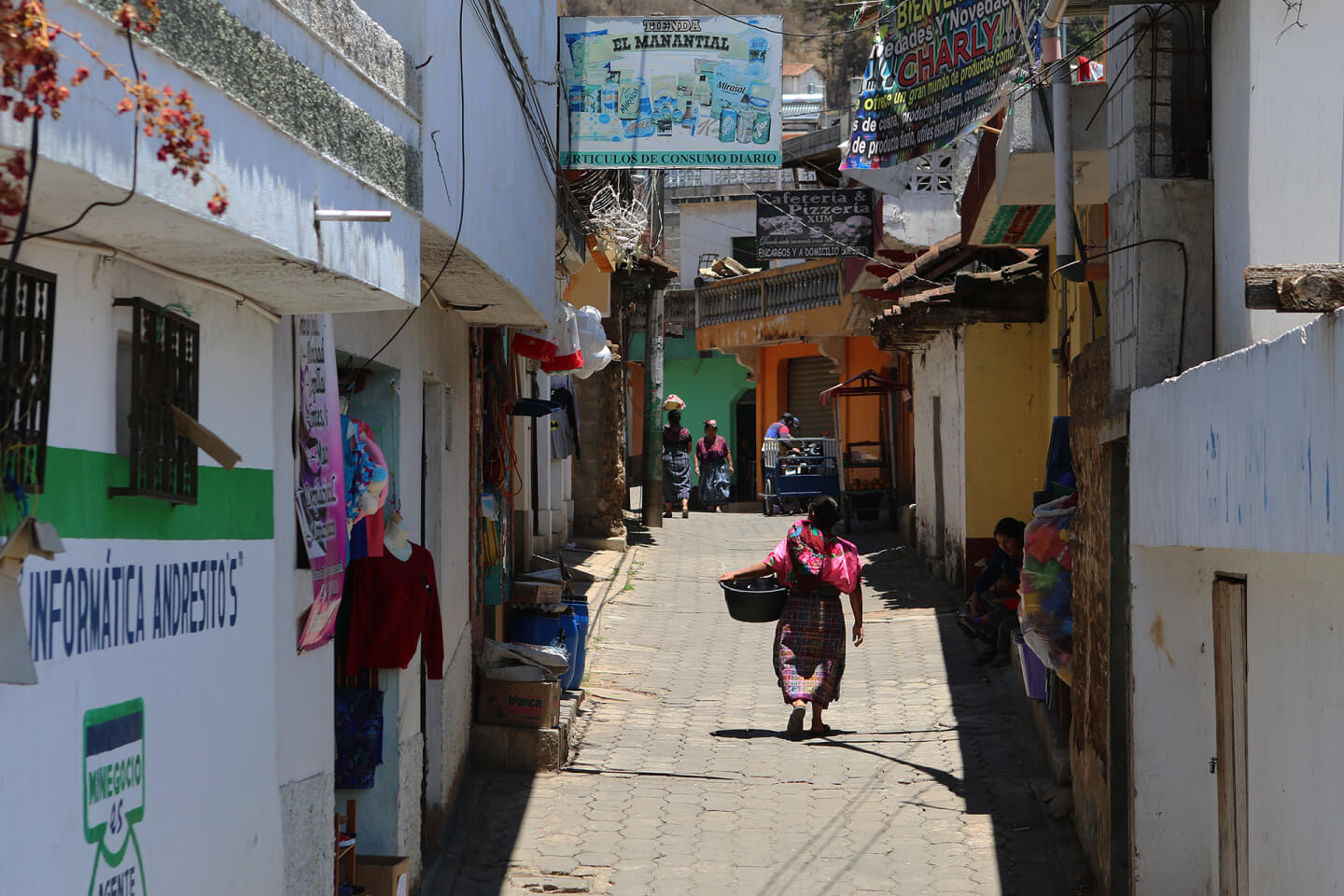

San Andrés Xecul, Totonicapán Department, Kʼicheʼ Maya. 2018.
San Gaspar Chajul, Quiché Department. 2018.
Doña Tomasa de Ignacio, one of the most respected residents of the city, shared her impression that she did not see the difference between Chichicastenango before or during the tourist boom — except that it affected the number of visitors to her husband’s mask museum. Her family continues to preserve and cherish the traditions of Kʼicheʼ, regardless of the presence or absence of outsiders.

Chichicastenango, Quiché Department, Kʼicheʼ tribe. 2024. JFernando Morales Photography
Miguel Ignacio, who runs the Diego Ignacio House, a cultural center in Chichicastenango, despite his activities aimed at popularizing local culture and traditions, feels the line beyond which authenticity is irretrievably lost.
And when asked if he plans to somehow develop his cultural center so that more people would know about it, he replied that he prefers to leave it for the elite, those who are really interested in this special experience.
The Diego Ignacio House, in addition to its activities in the field of art and culture, also helps single mothers and women who seek financial independence.
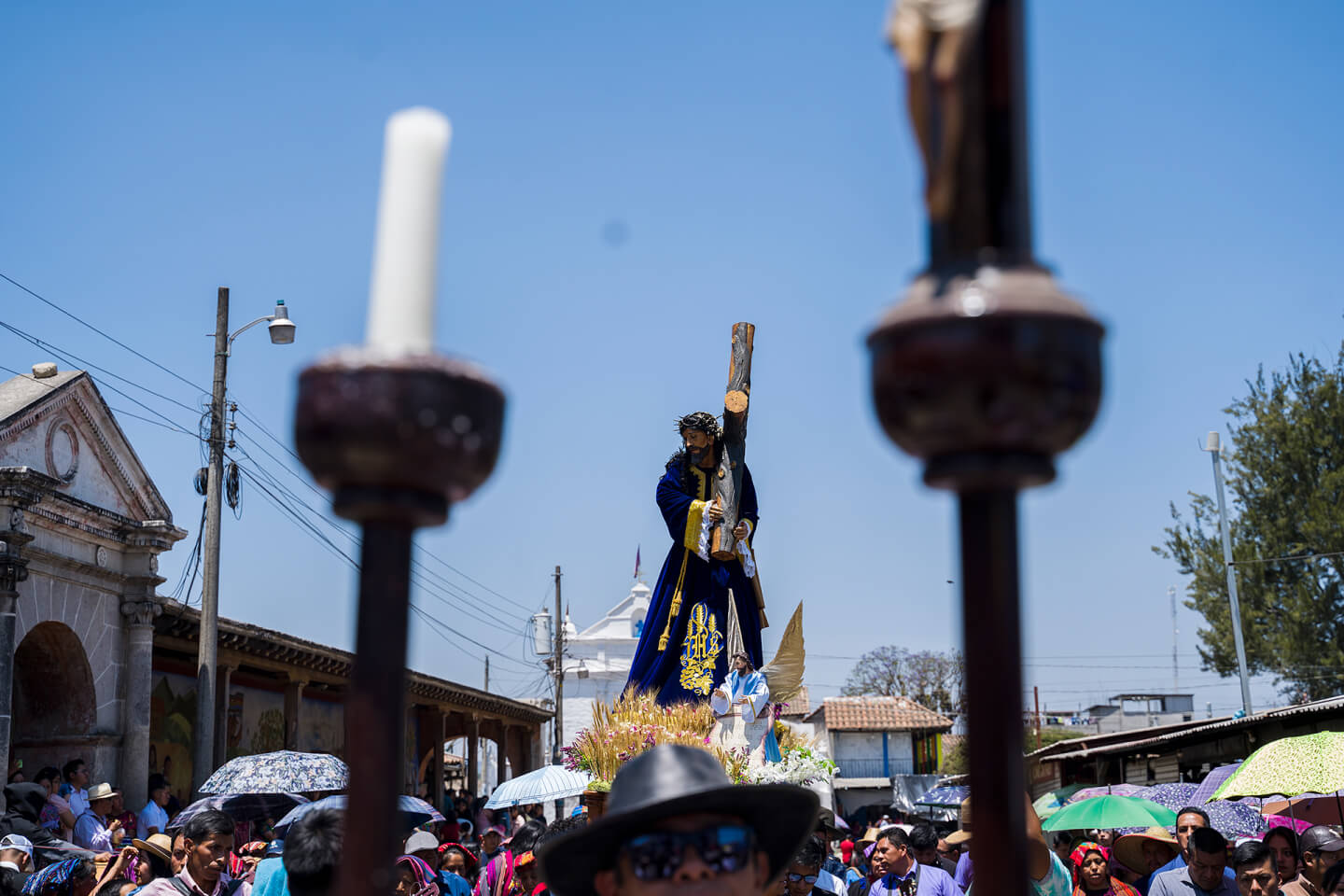
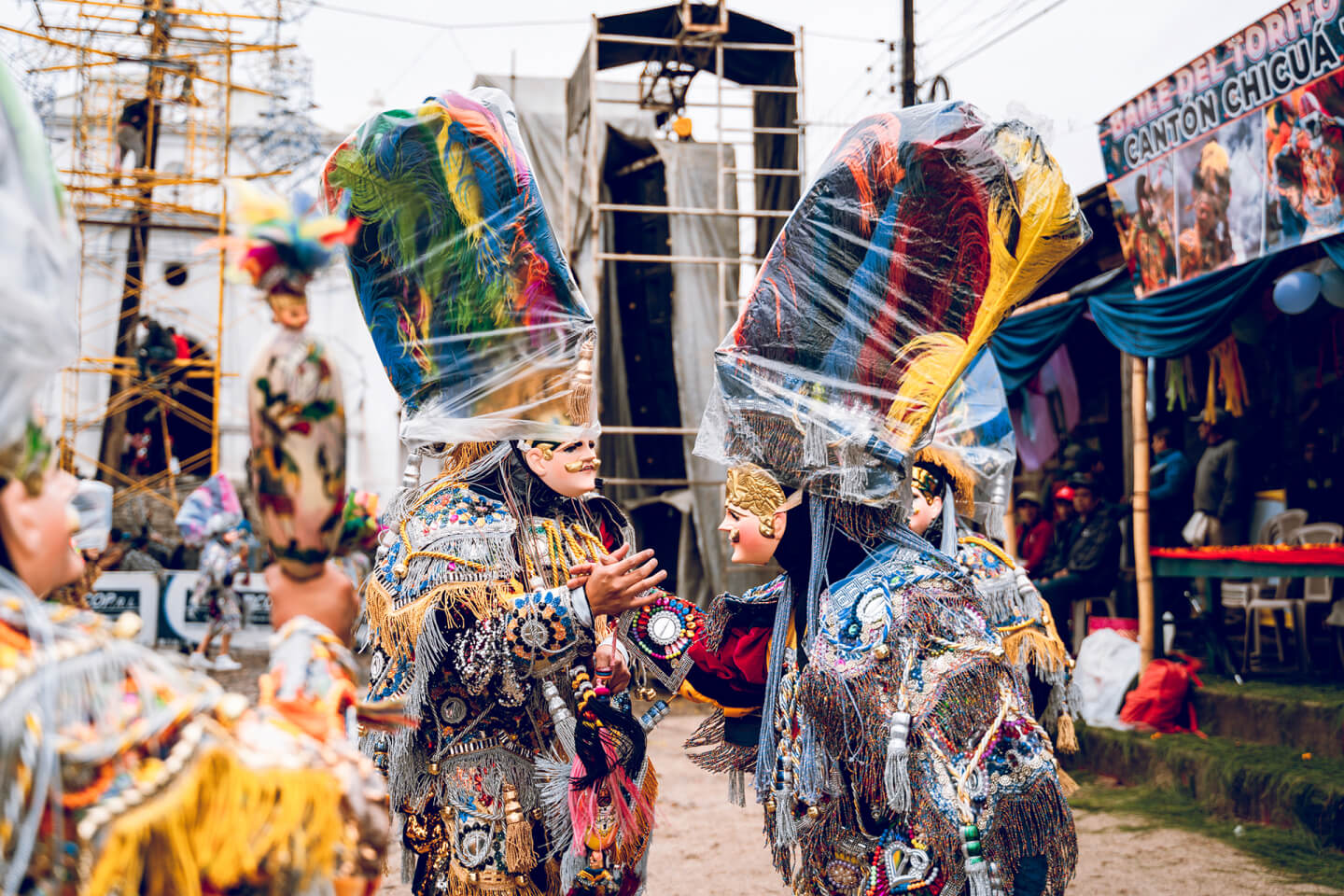



Chichicastenango, Quiché Department, Kʼicheʼ tribe. 2024. JFernando Morales Photography
Chichicastenango, Quiché Department, Kʼicheʼ tribe. 2023. JFernando Morales Photography
Roberto Sebastian Nix, a guide working in Chichicastenango, regards tourism as an unconditional benefit — due to the specifics of his work, as well as because it provides life for his family and hundreds of his countrymen.
And they have to think about survival first, and only then about preserving traditions. The presence of a large number of wealthy guests undoubtedly contributes to the former.

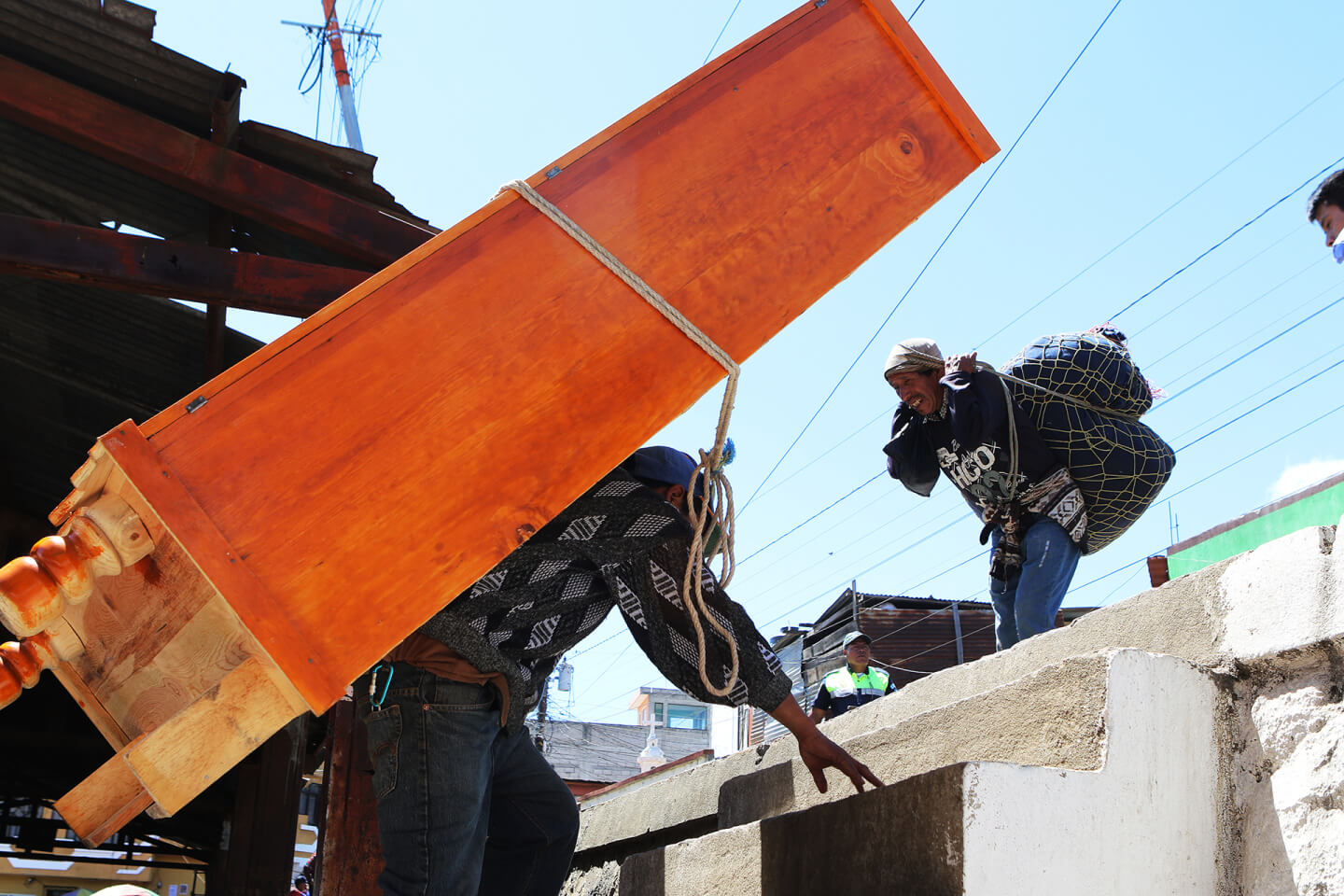
Santiago Atitlán, Sololá Department. 2018.
San Francisco el Alto, Totonicapán Department. 2018.







Guatemala is an interesting example of how globalization is changing life in a once closed country. And at the same time, this is an example of how even small nations manage to maintain their identity in the context of globalization, despite government policy, financial situation, and the huge uncontrolled flow of tourists that has flooded the country in just a few decades. Now, in these new circumstances, people are able to adapt to new conditions, and still return to their roots and traditions.



Contacts
Events
Project








